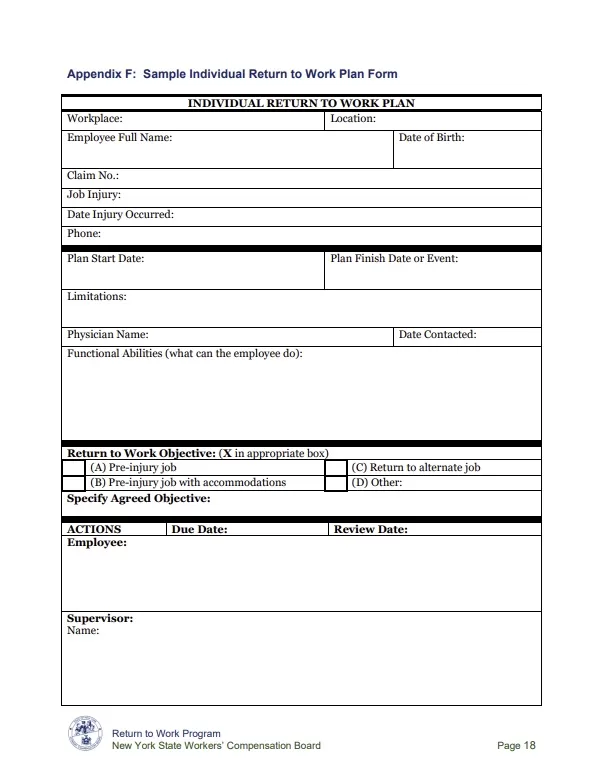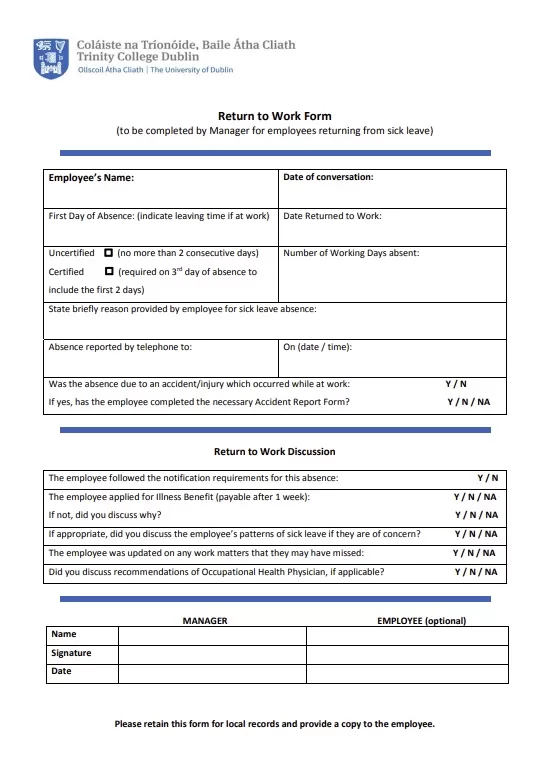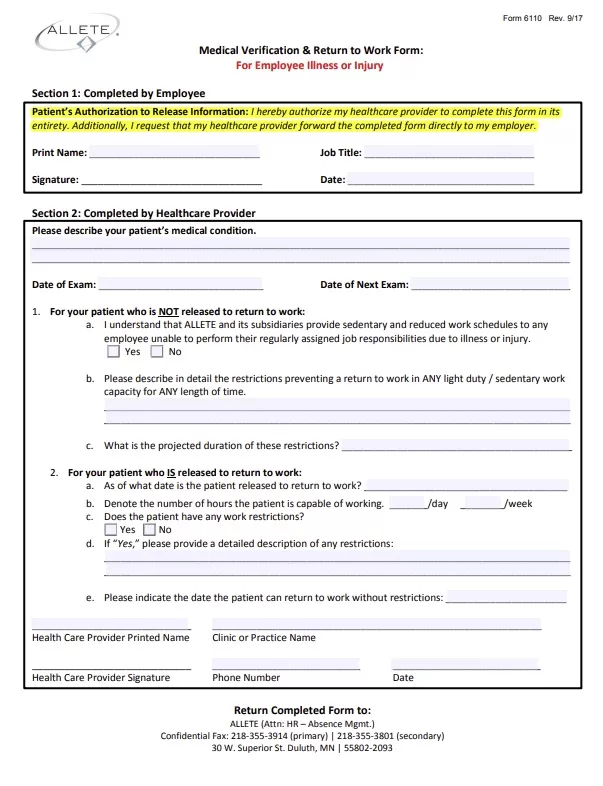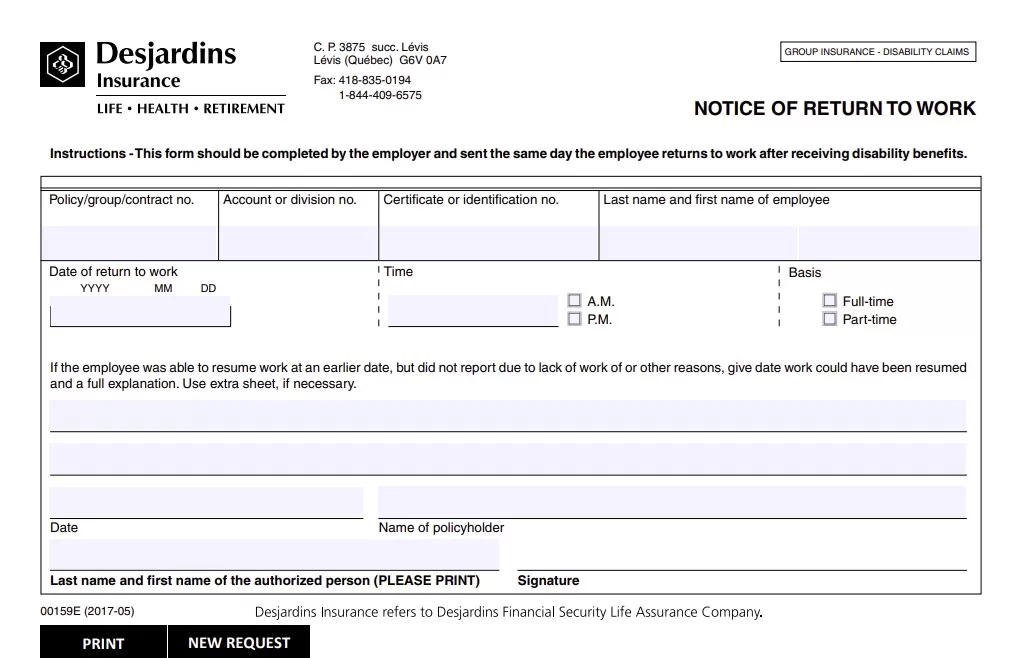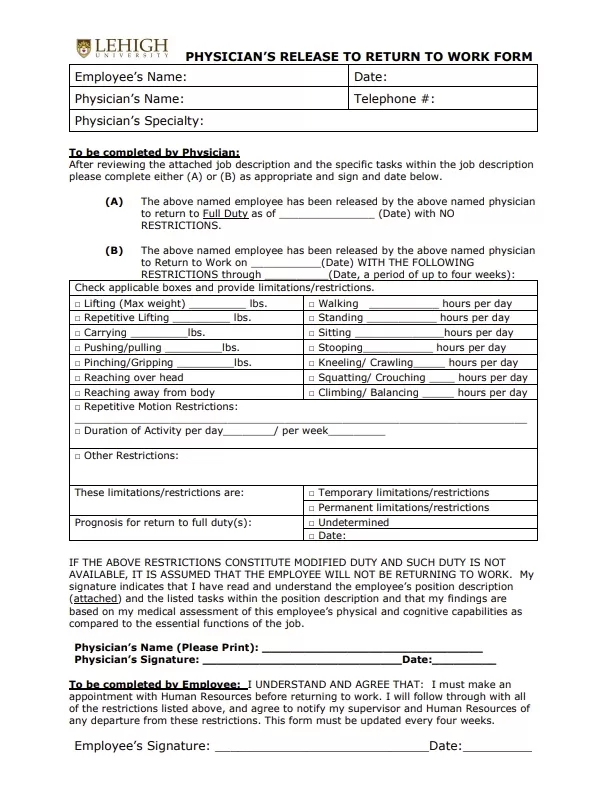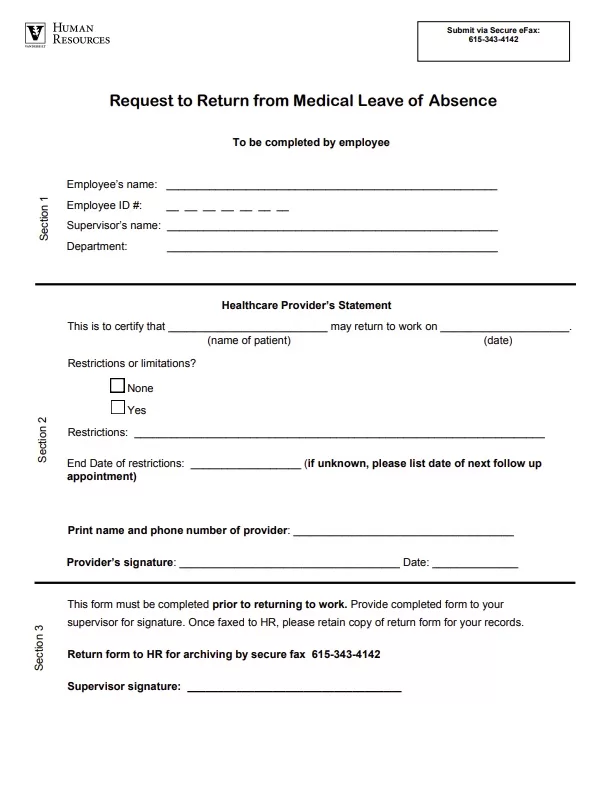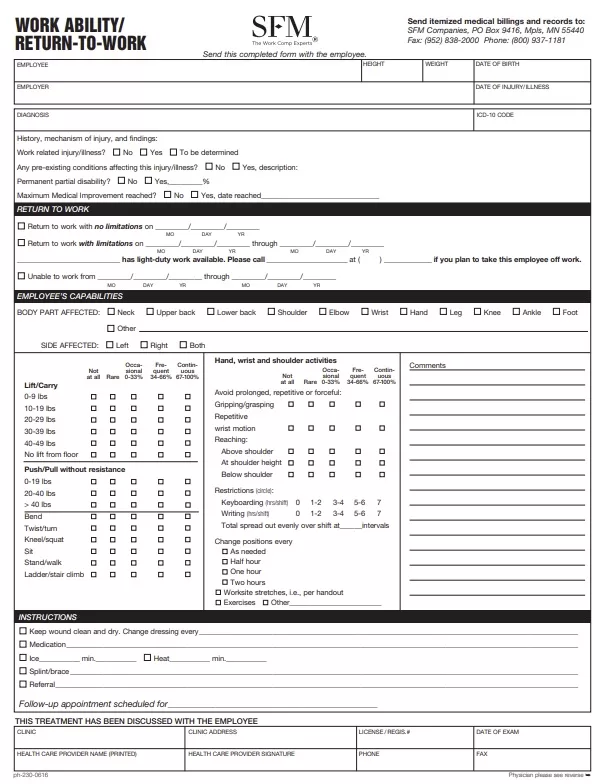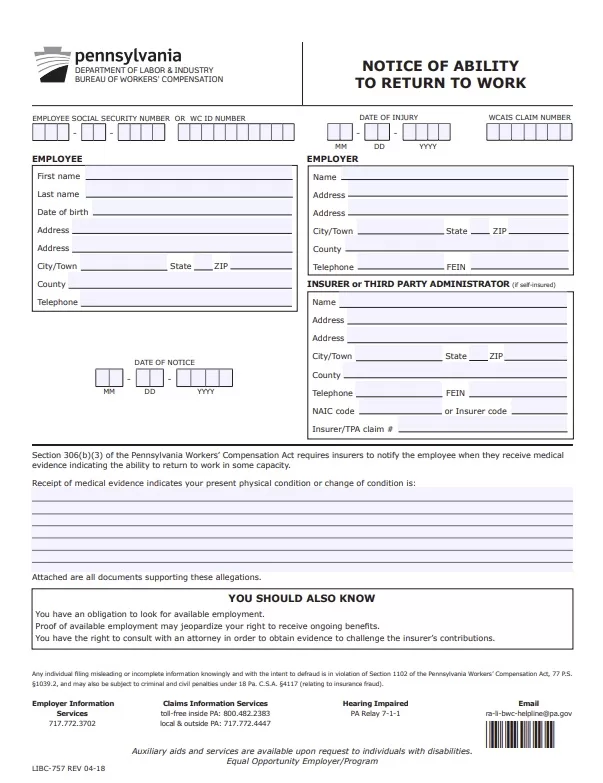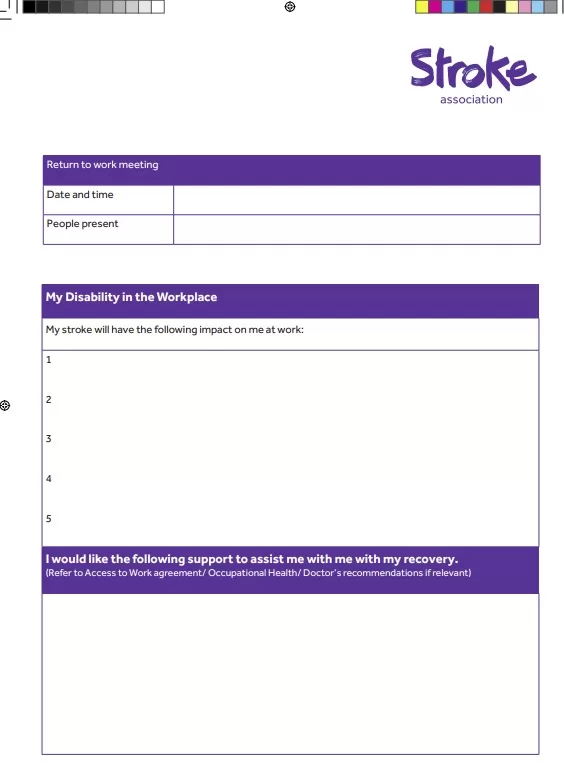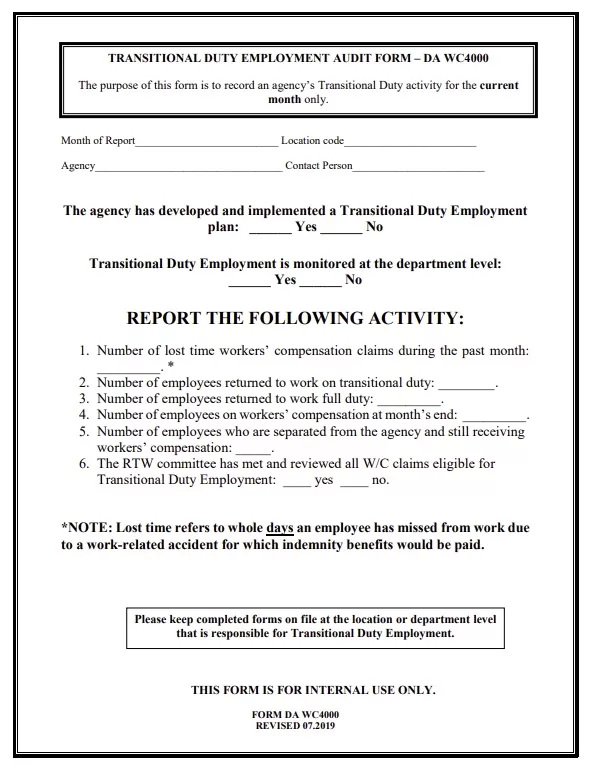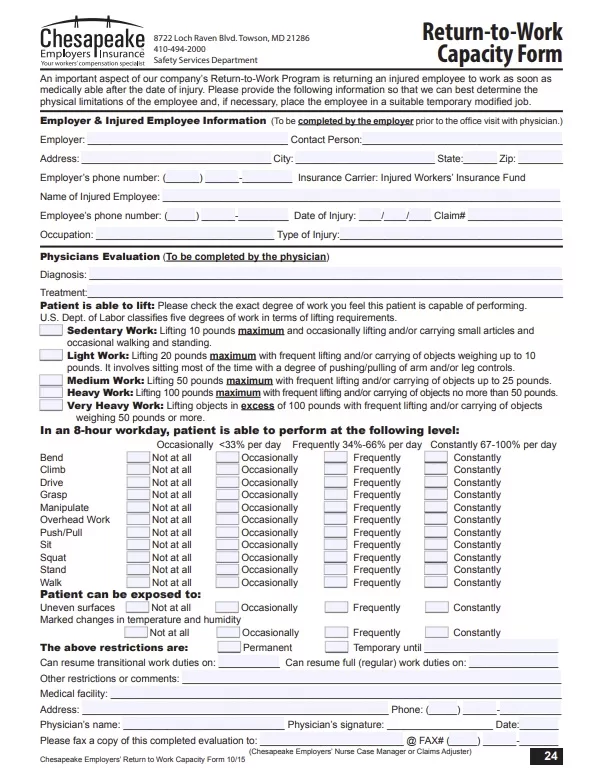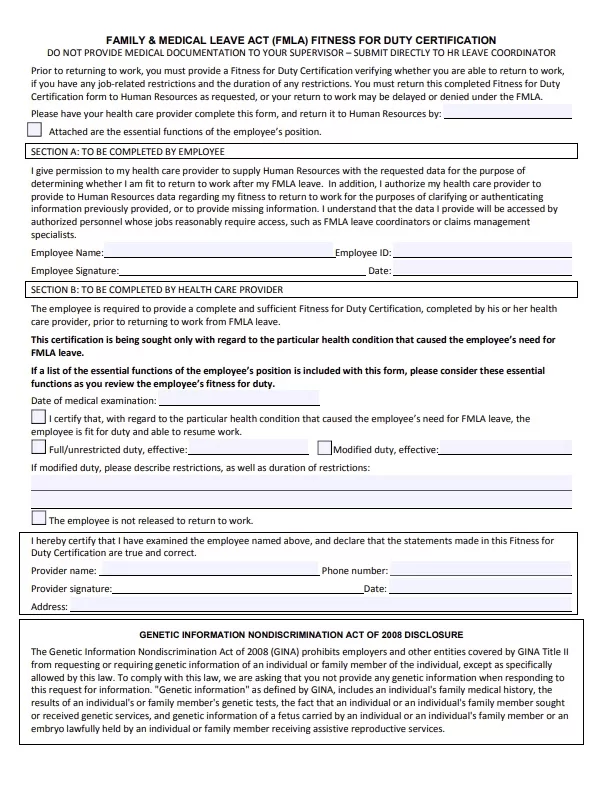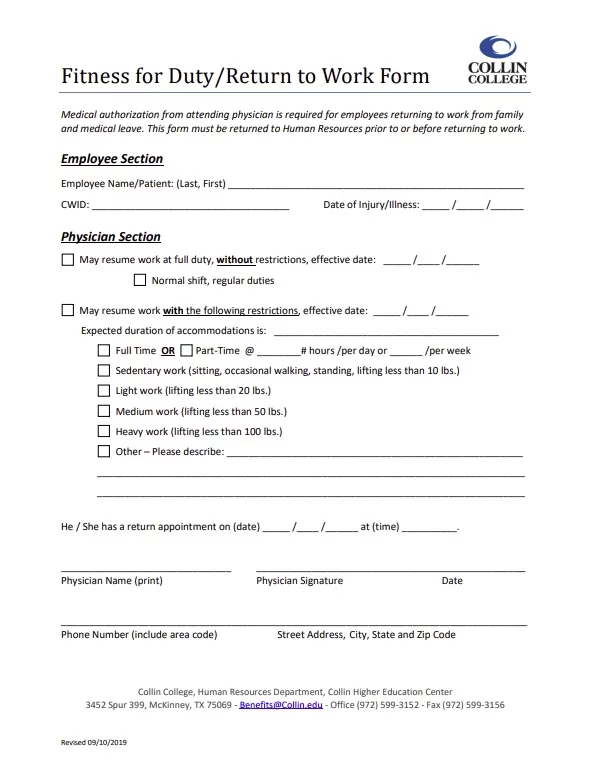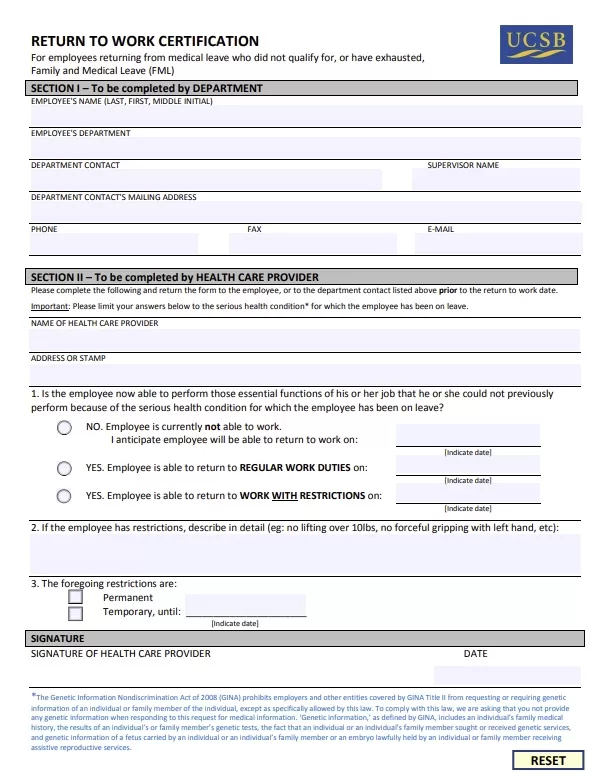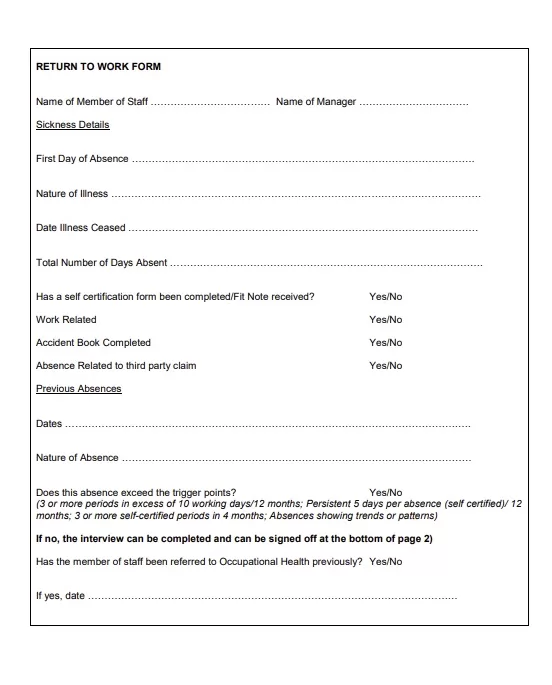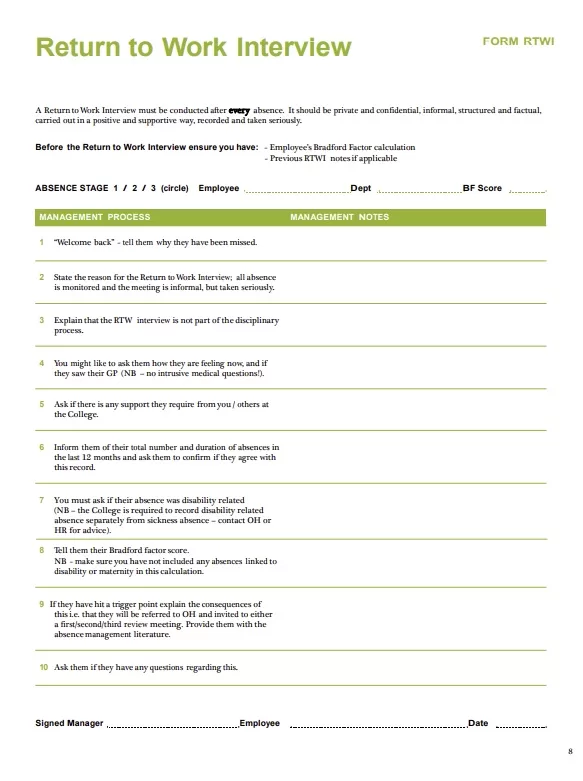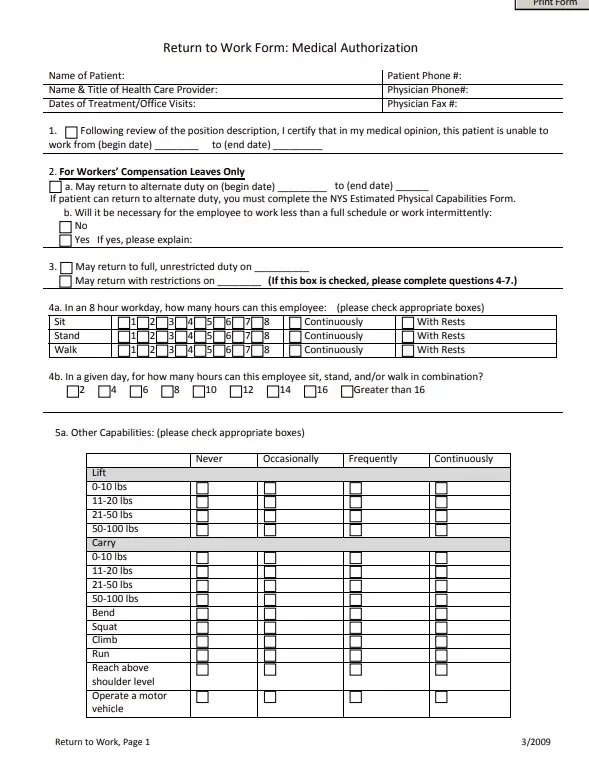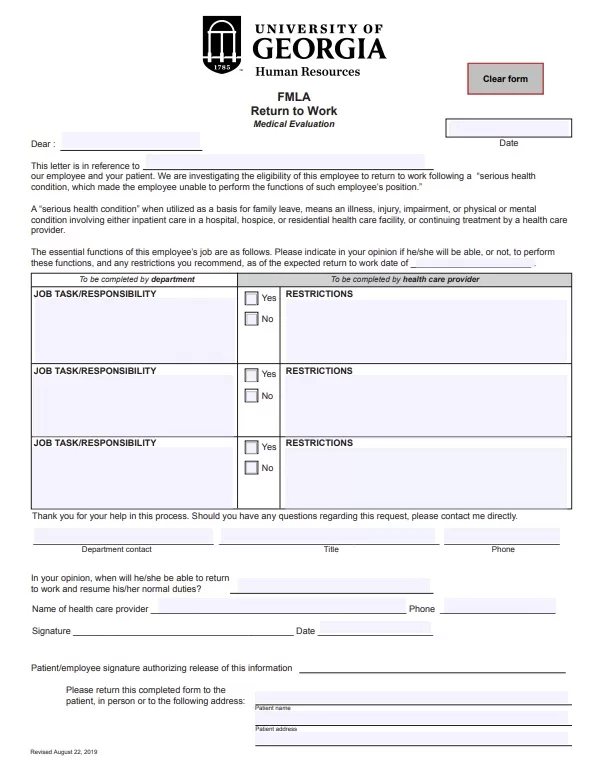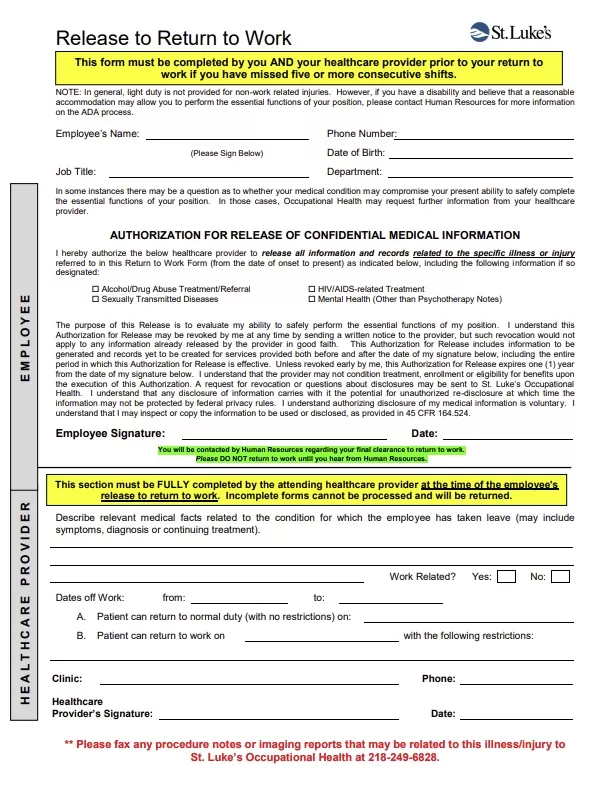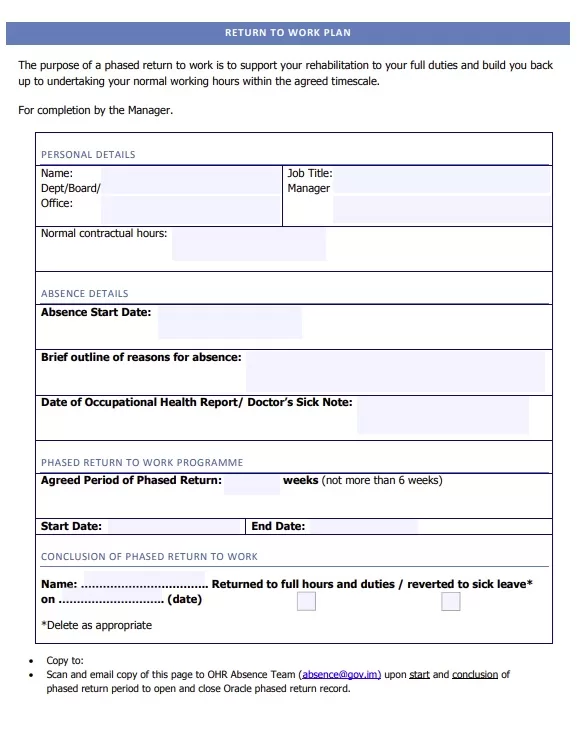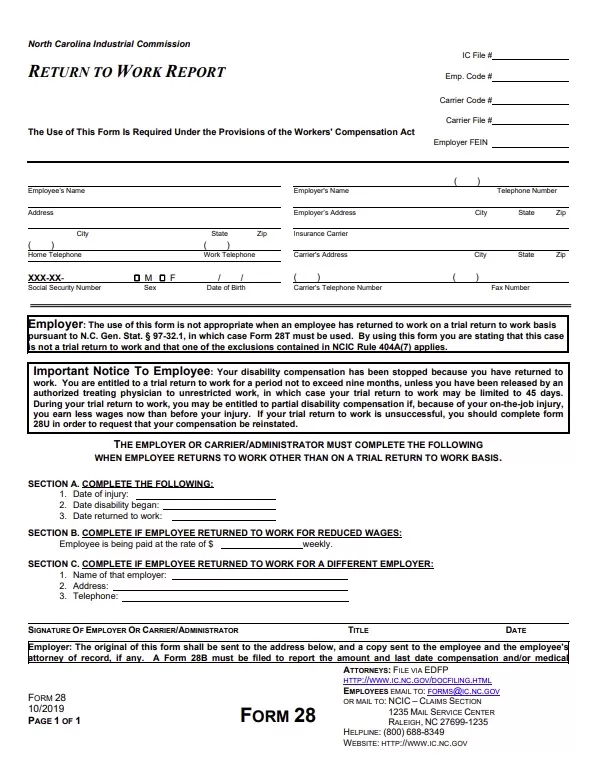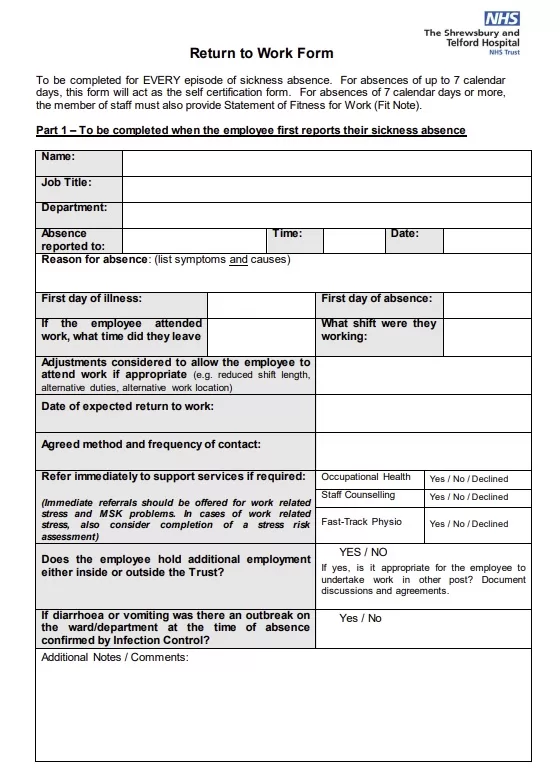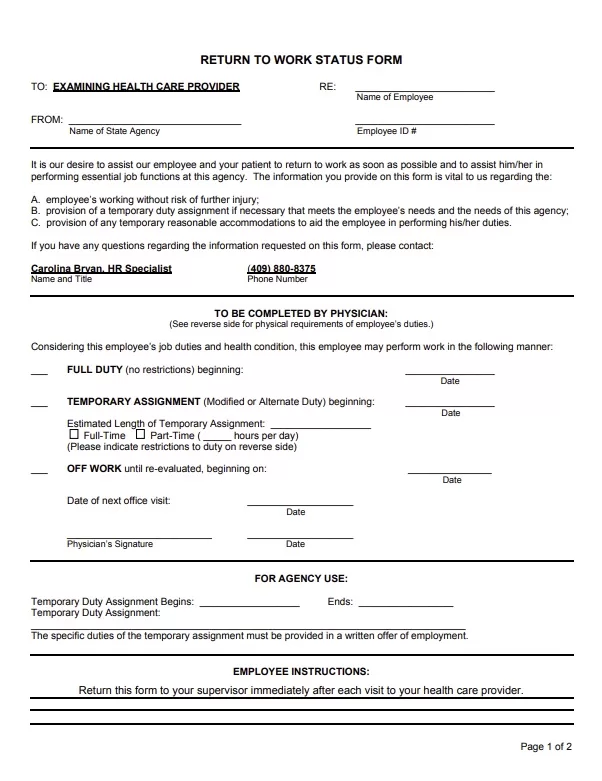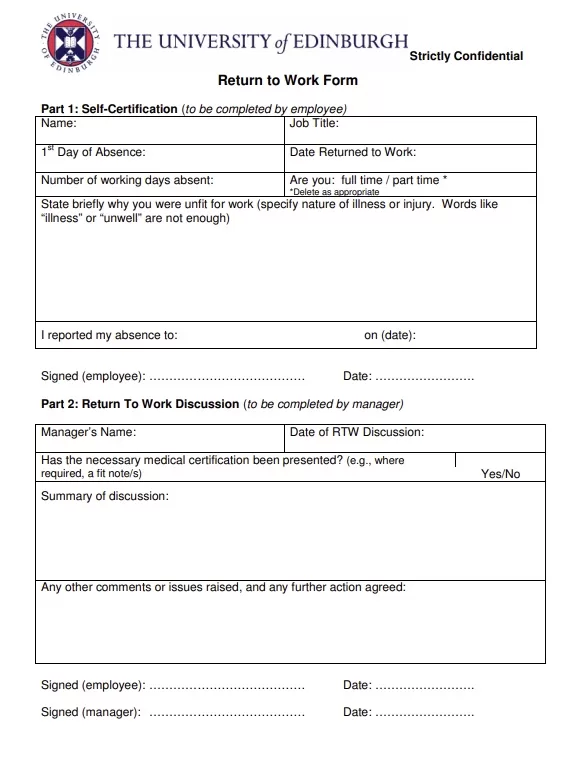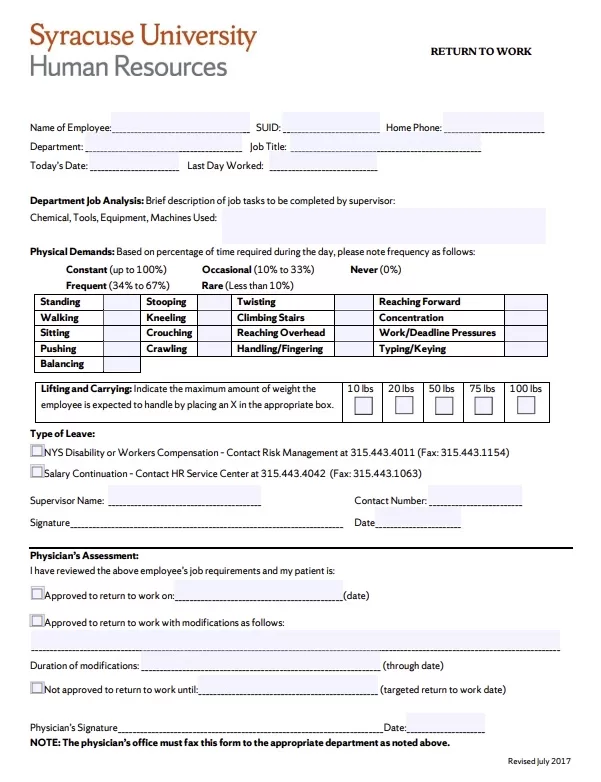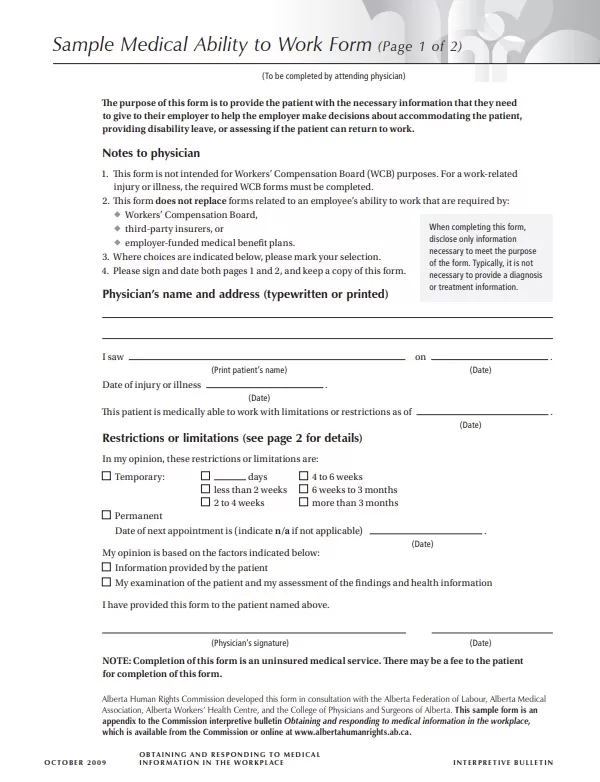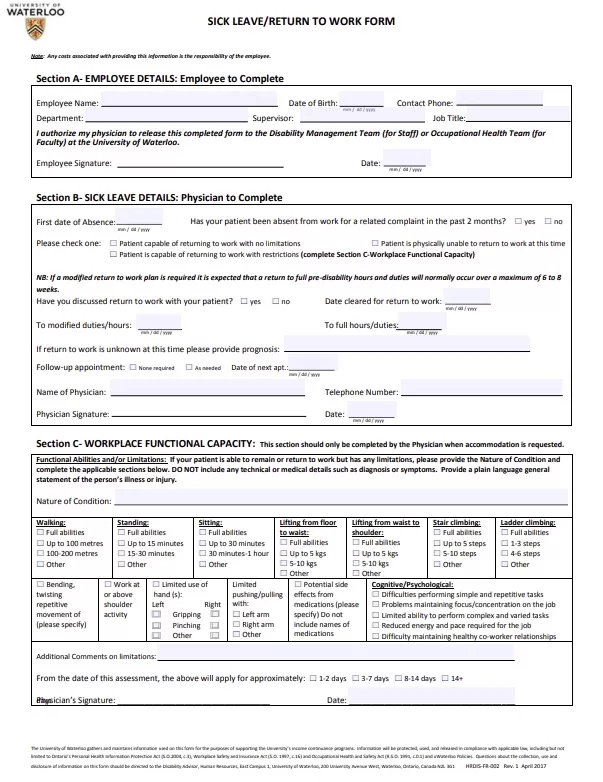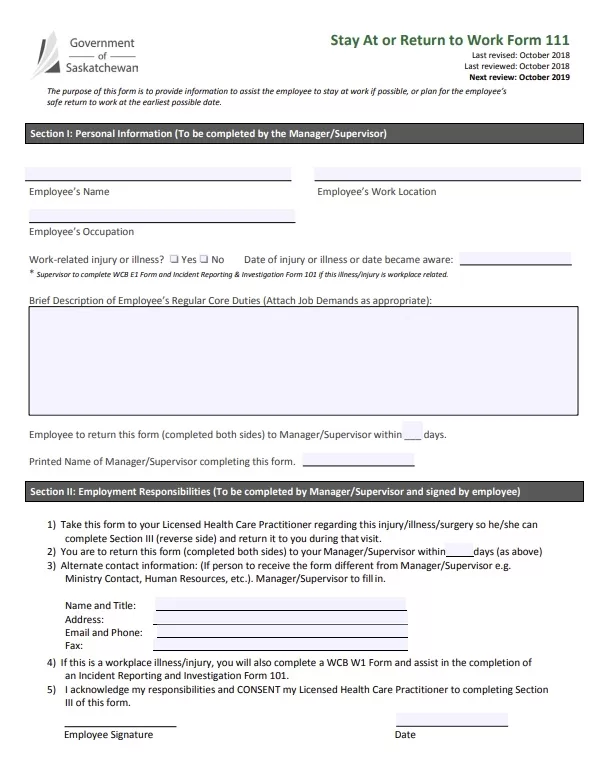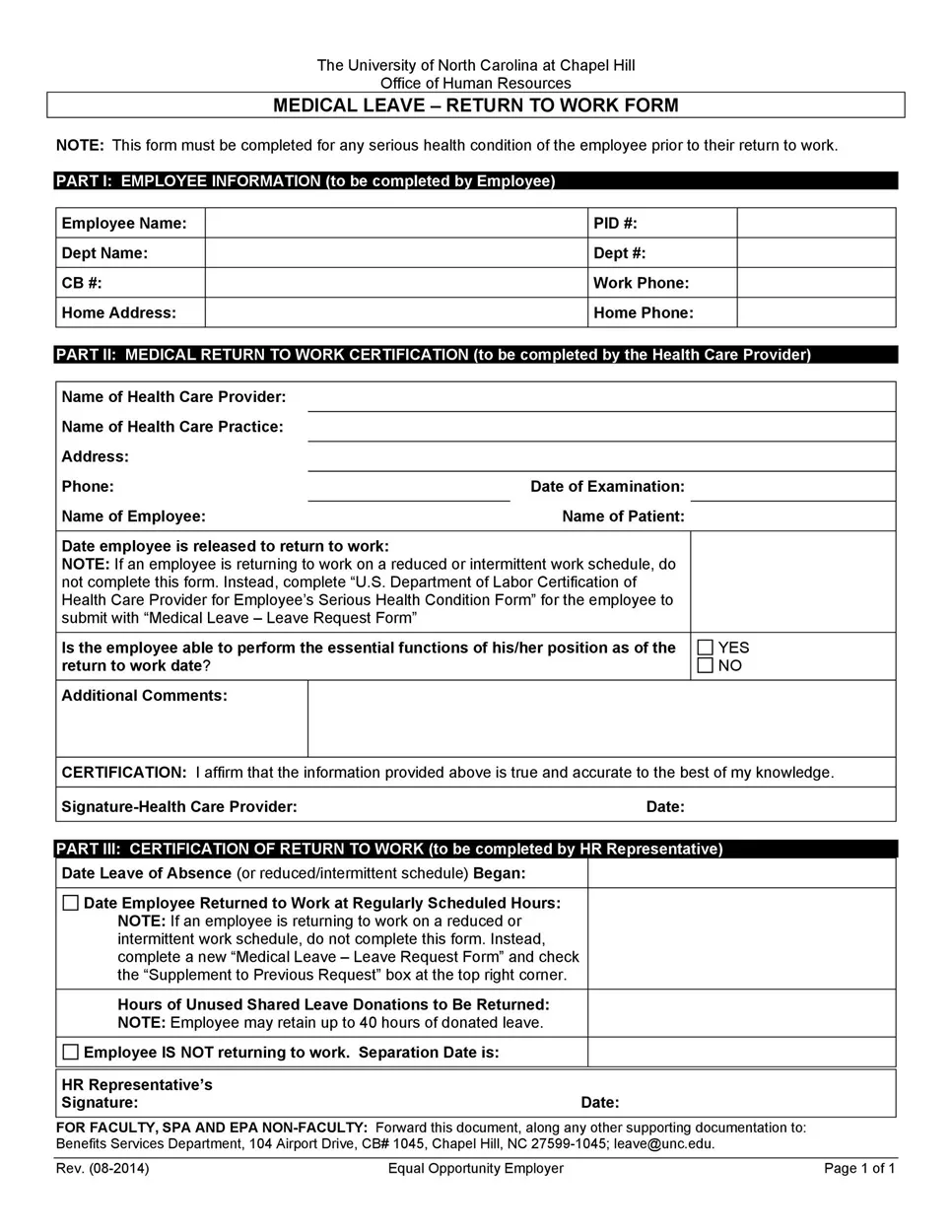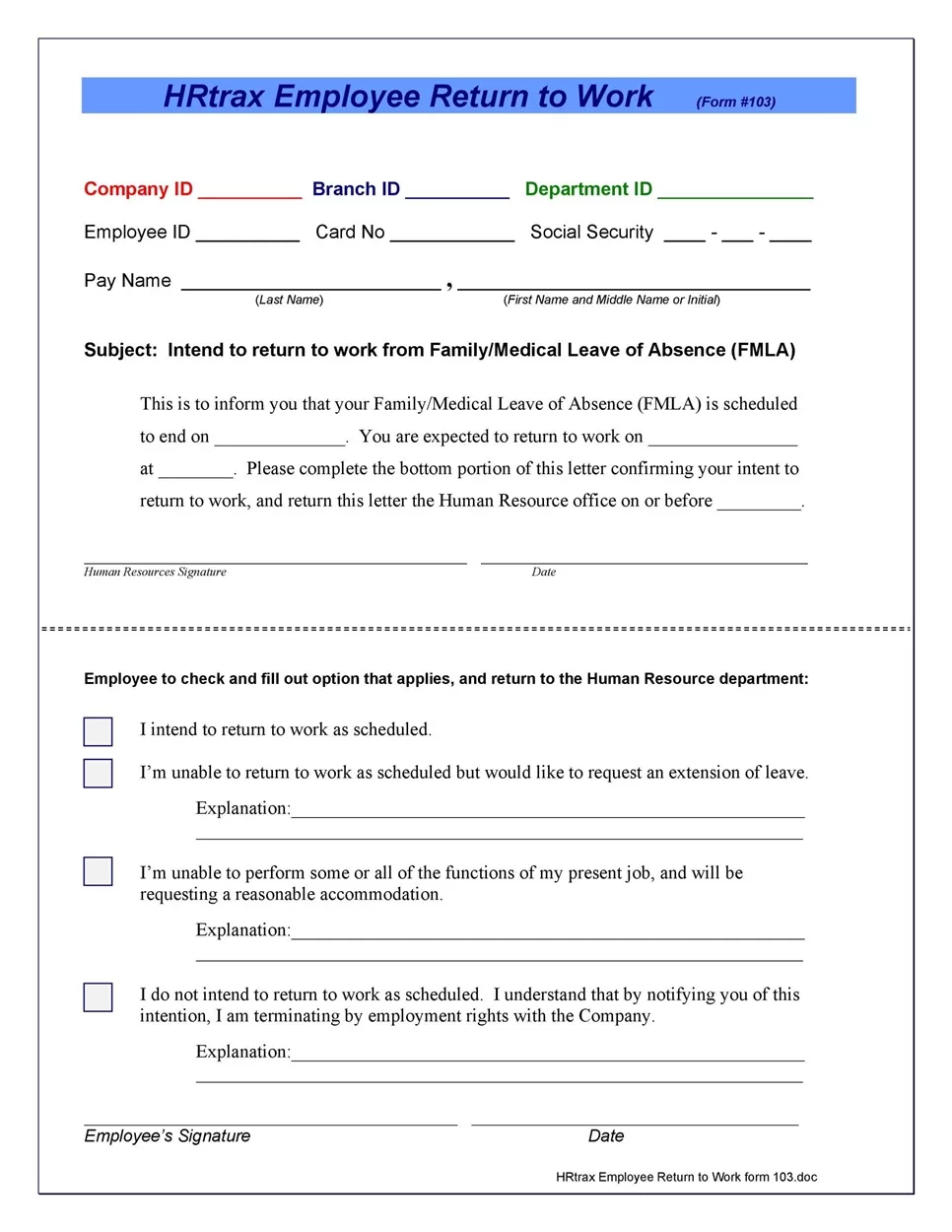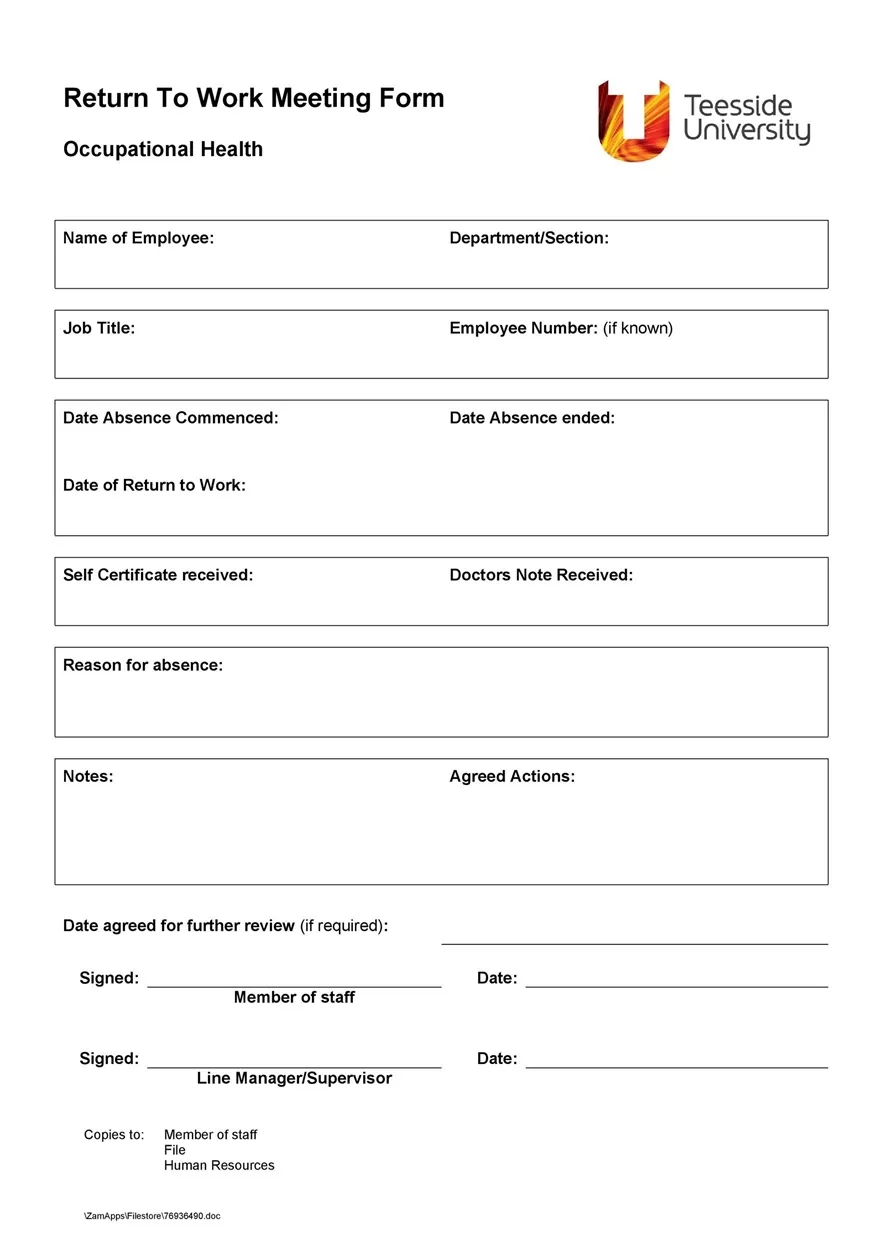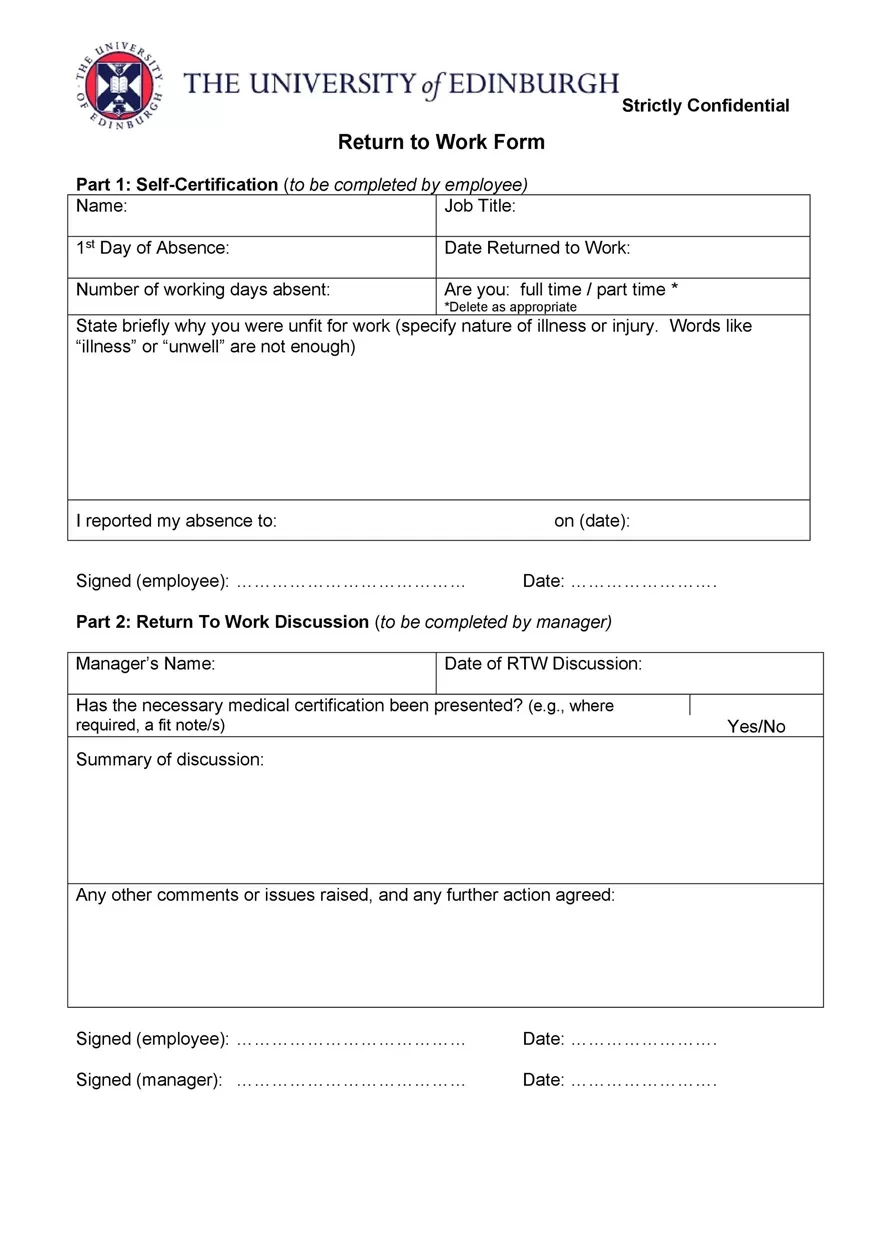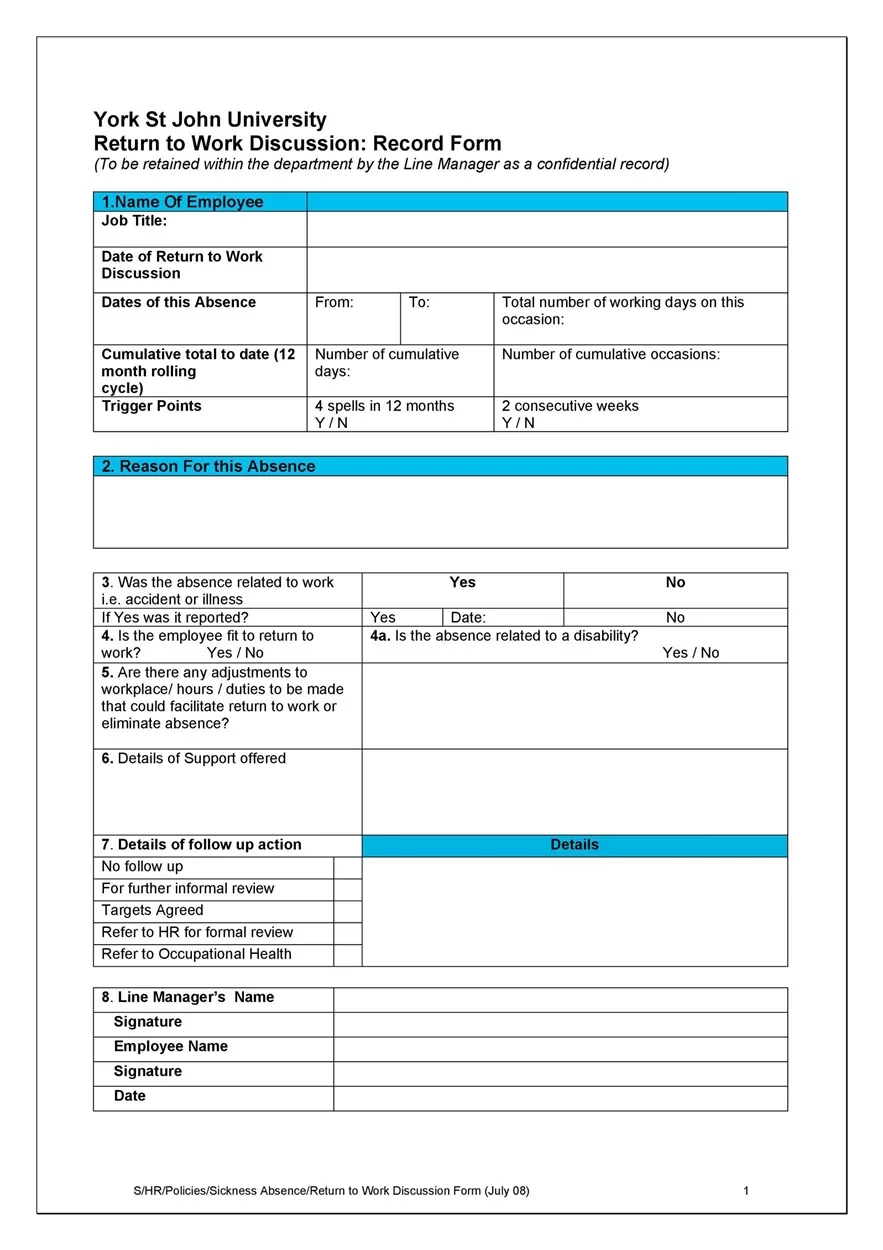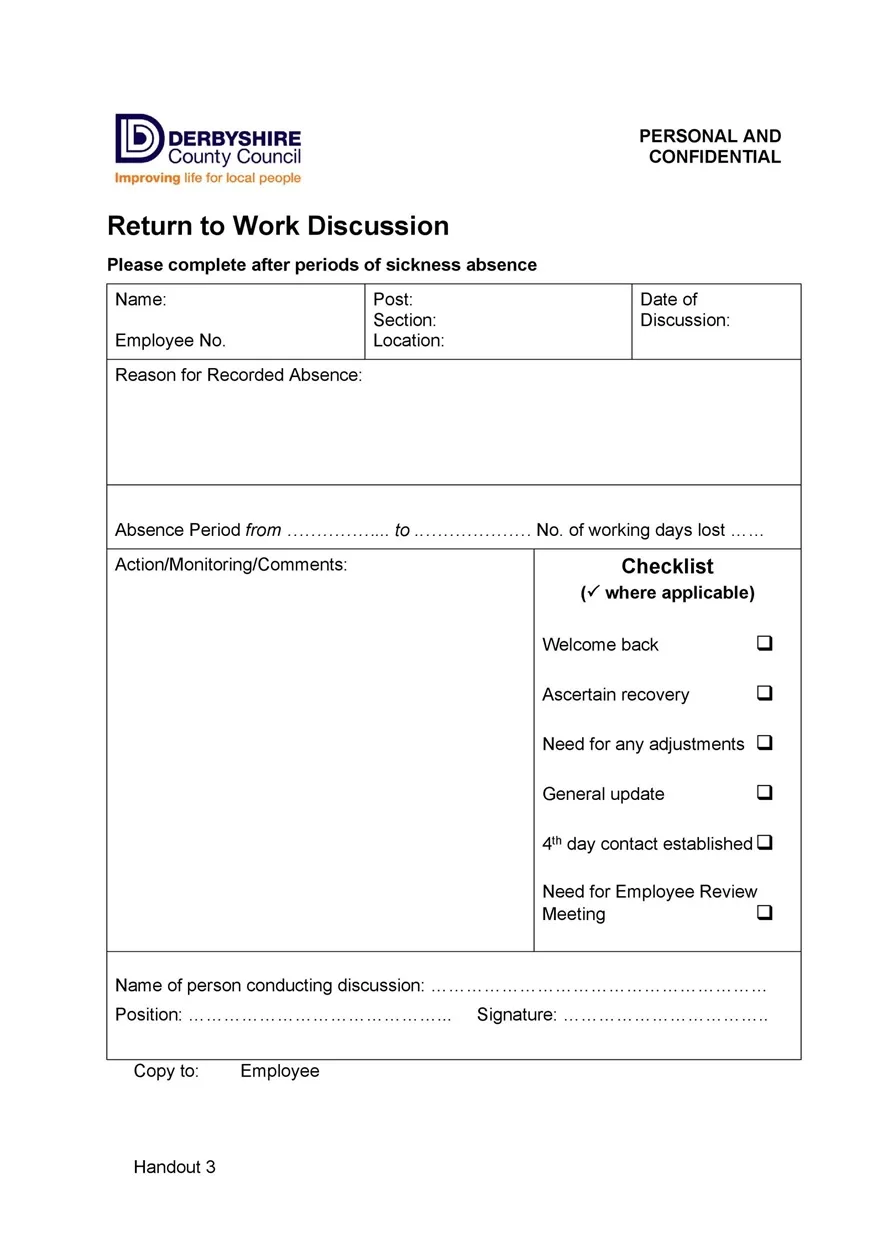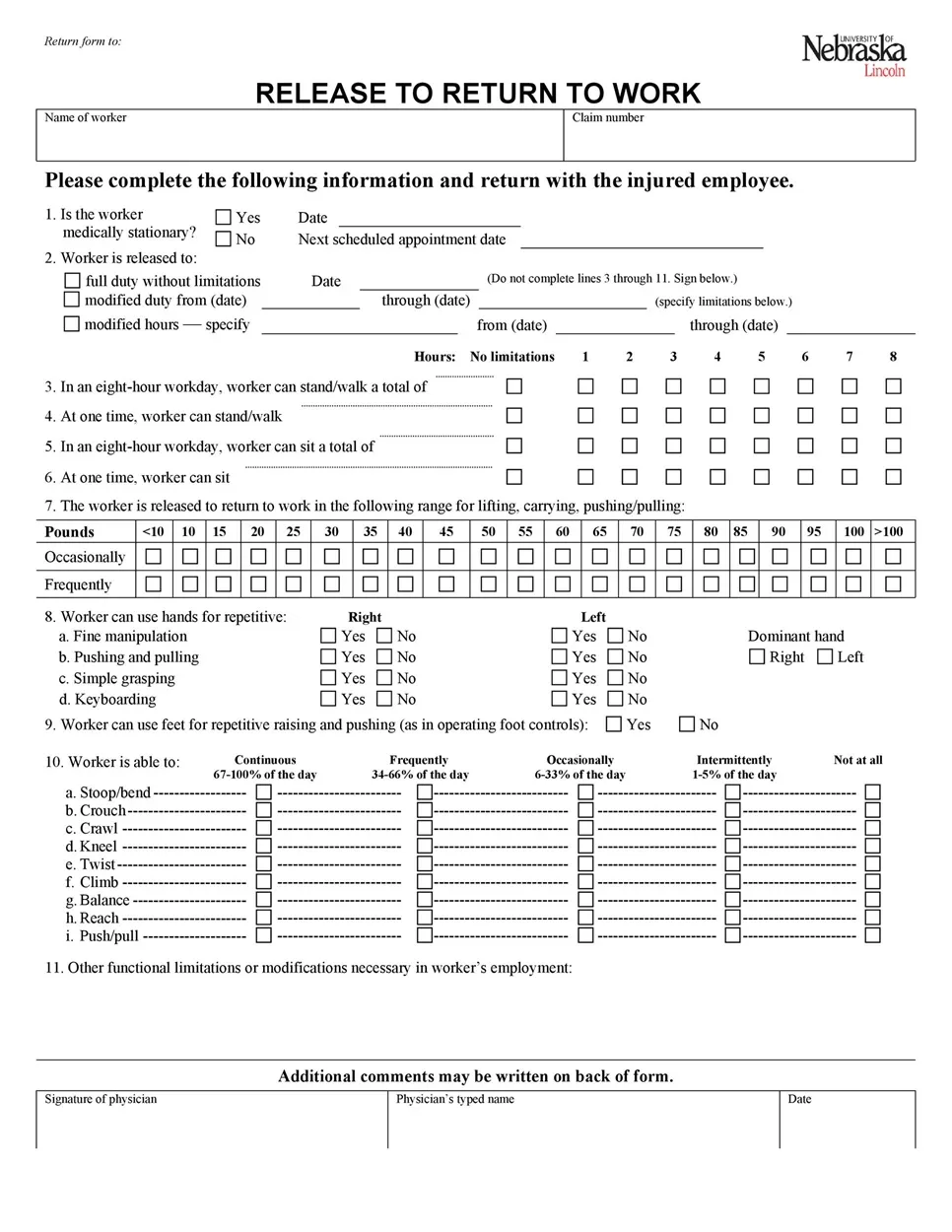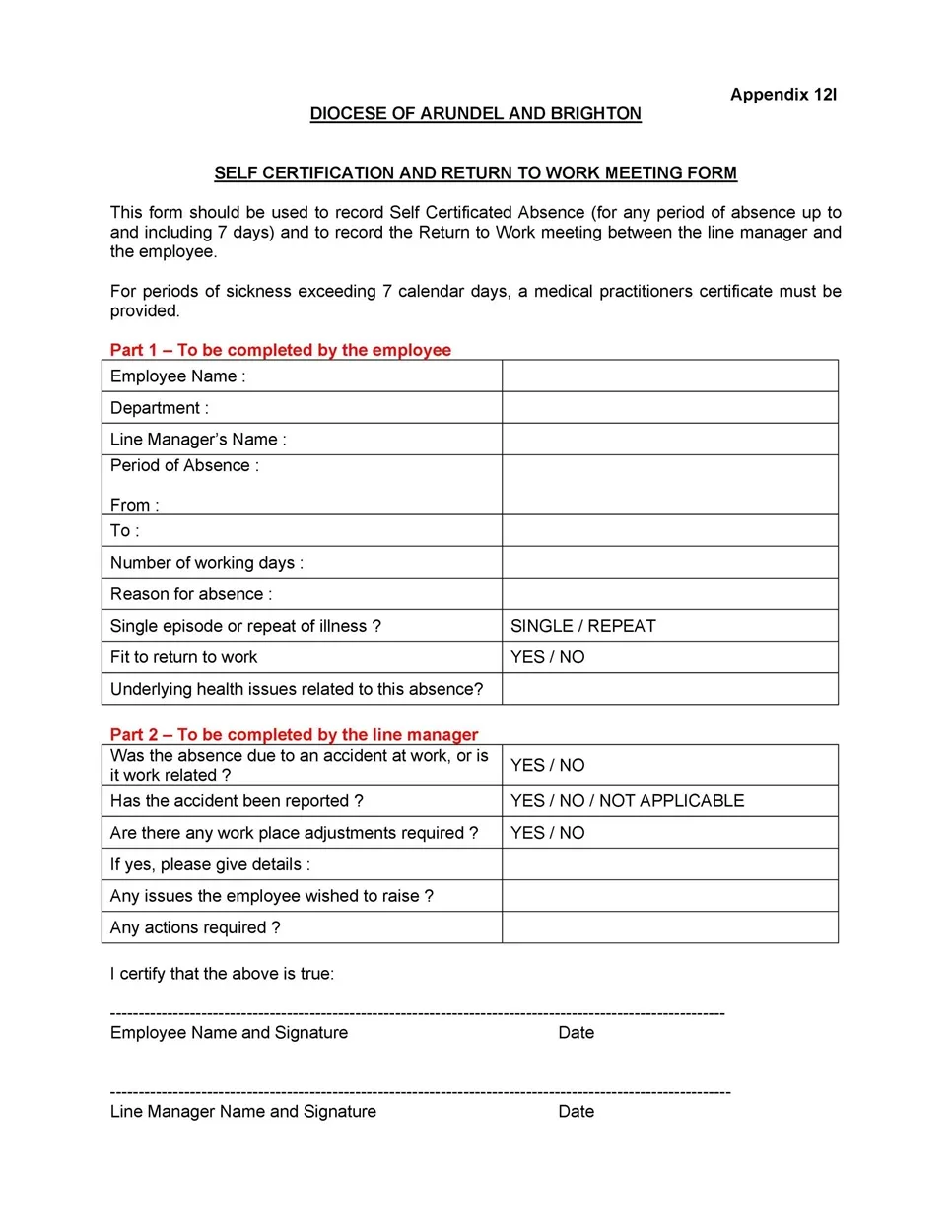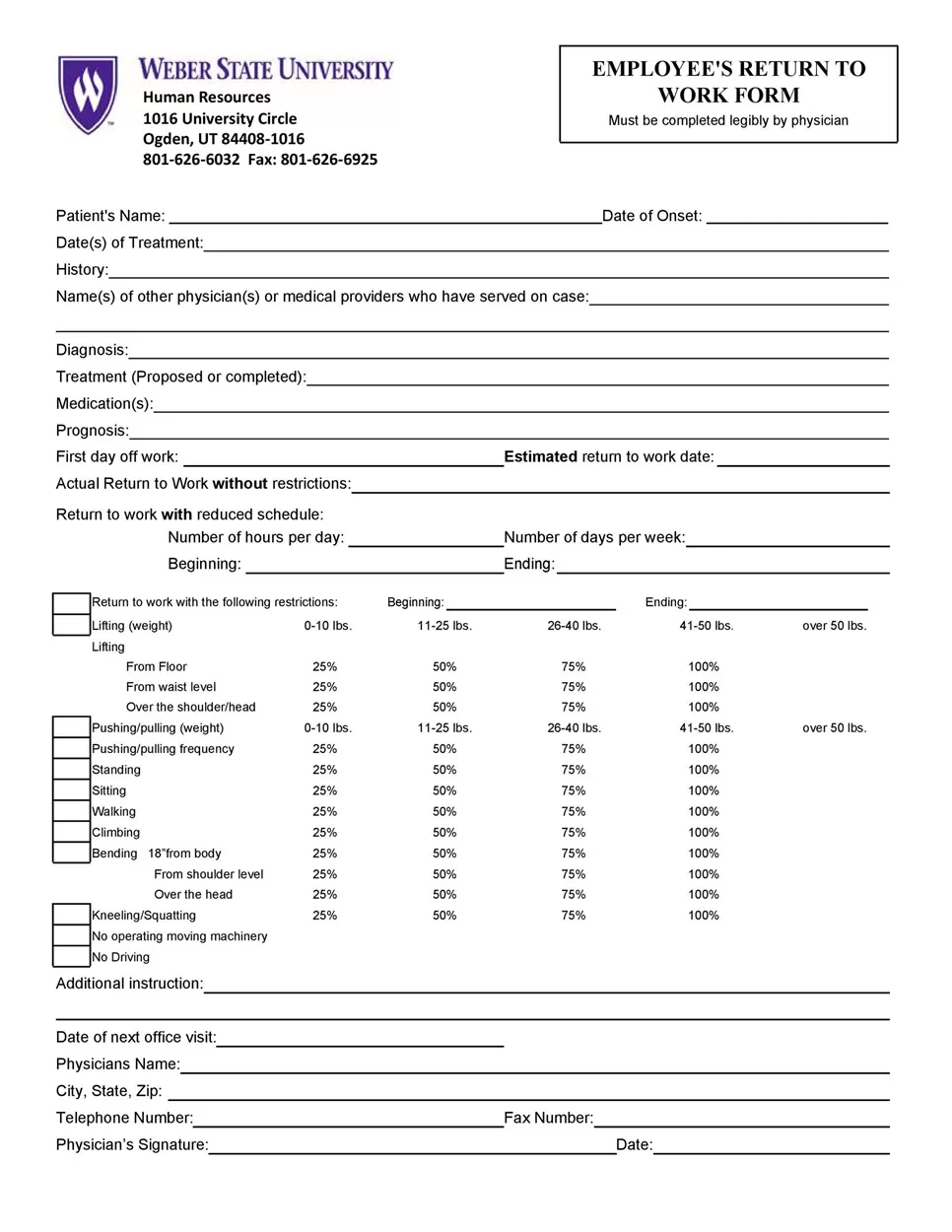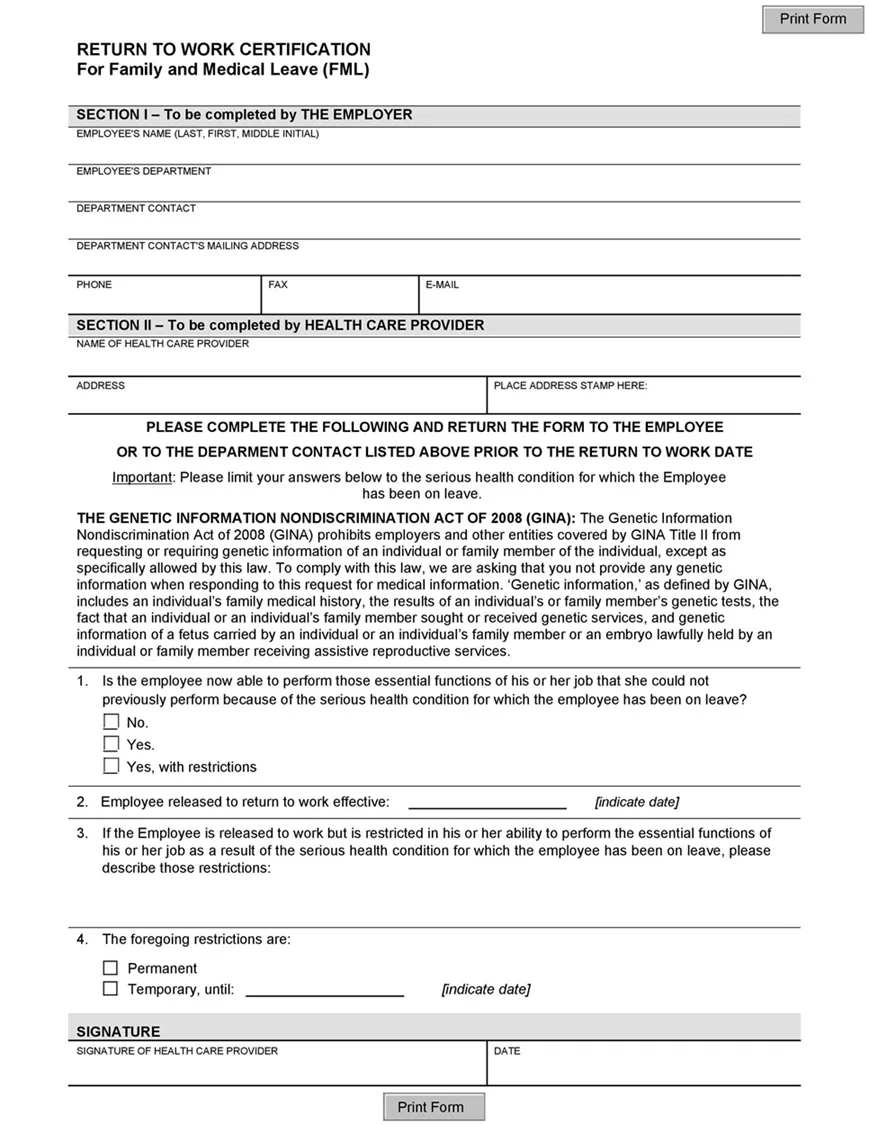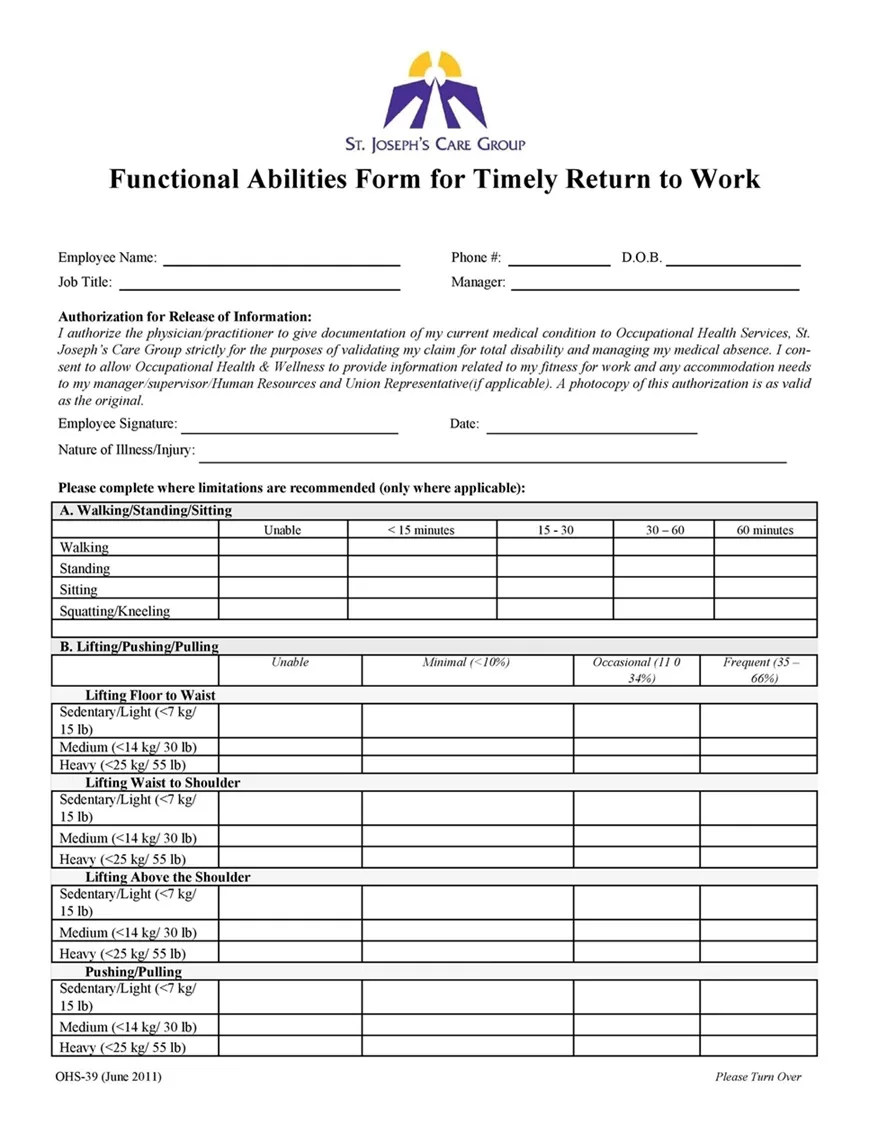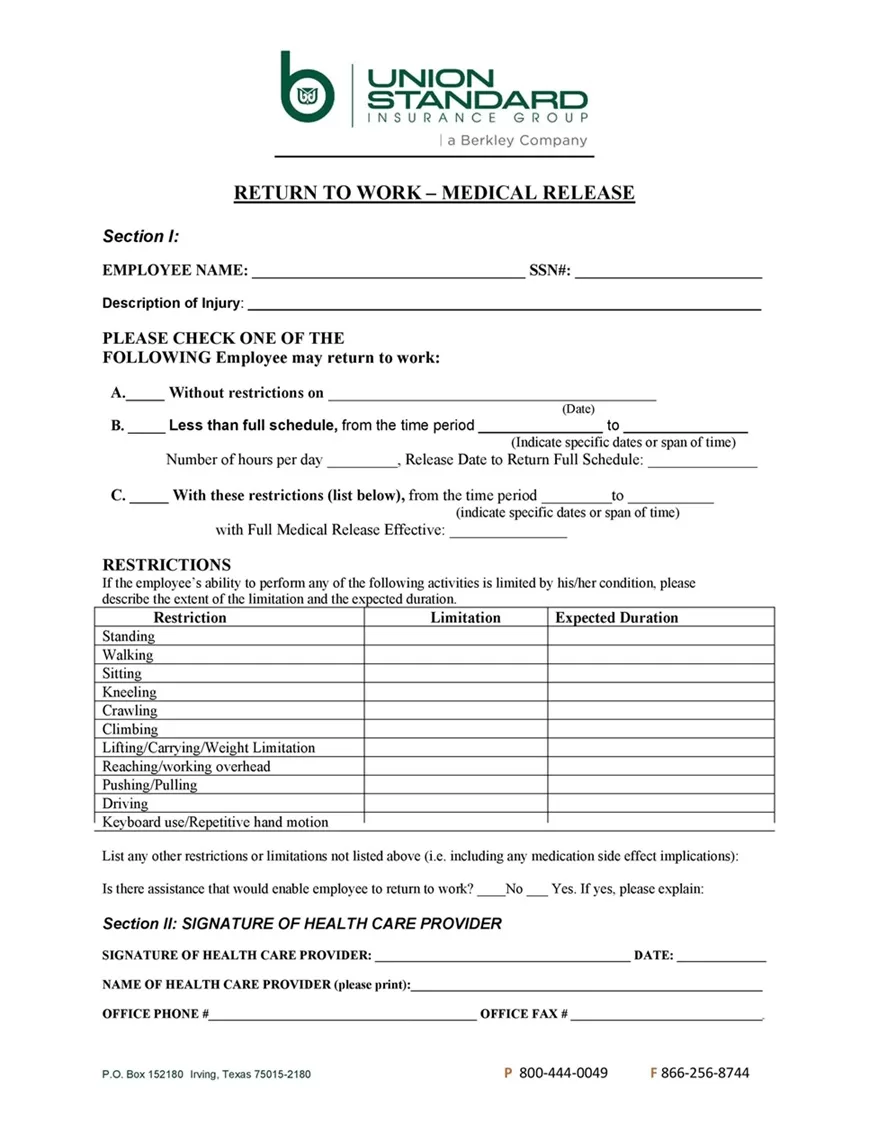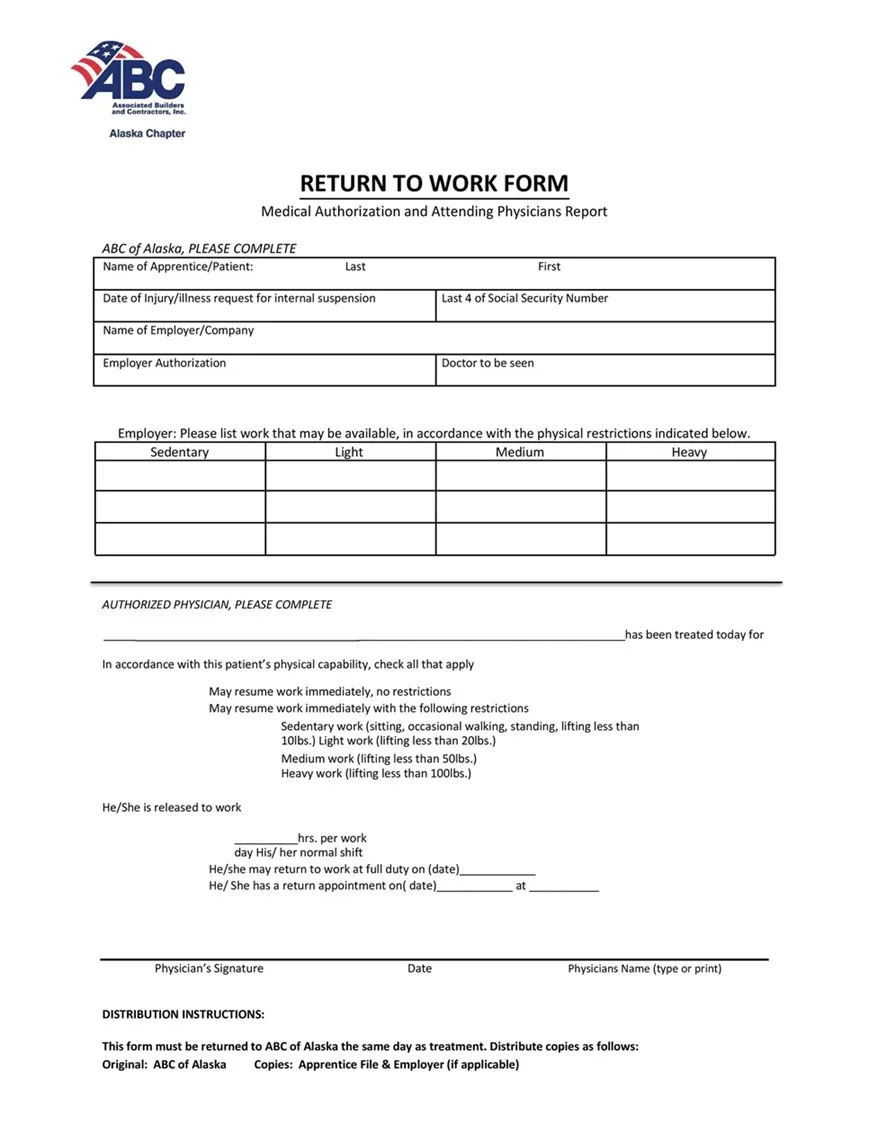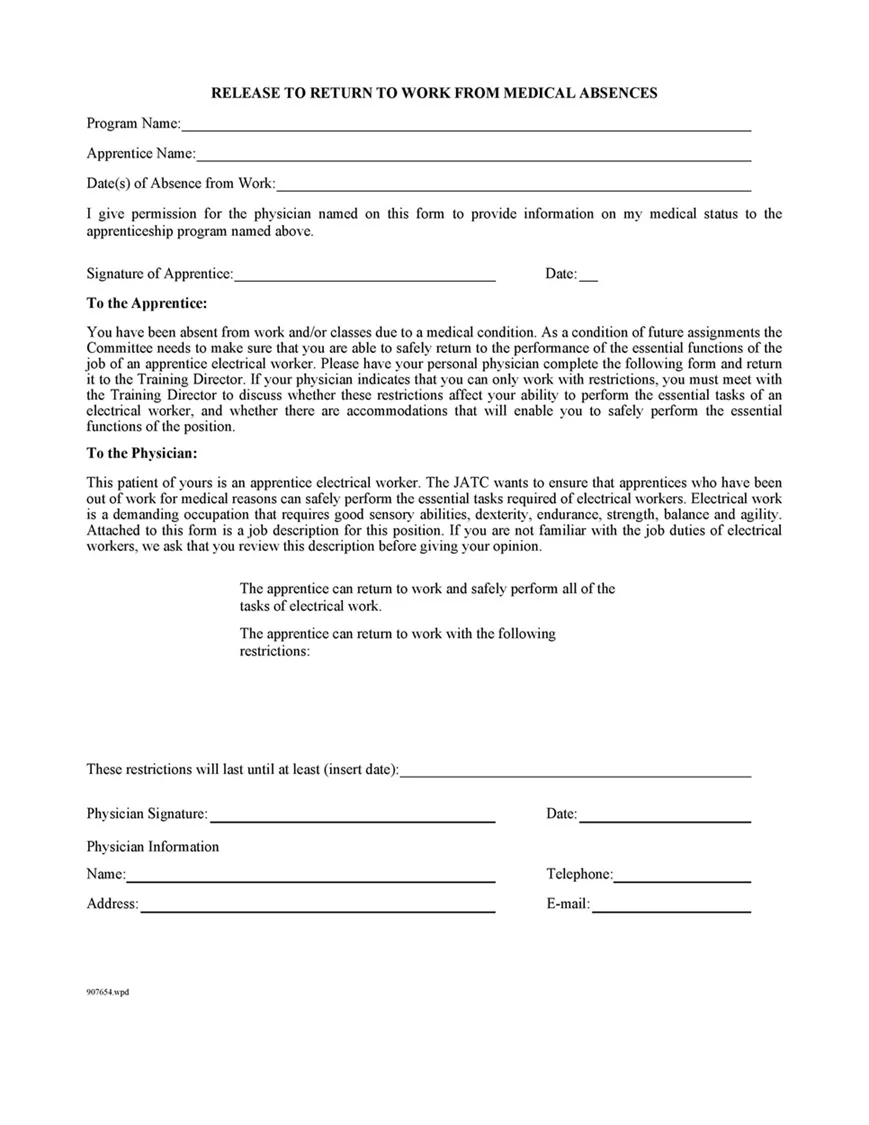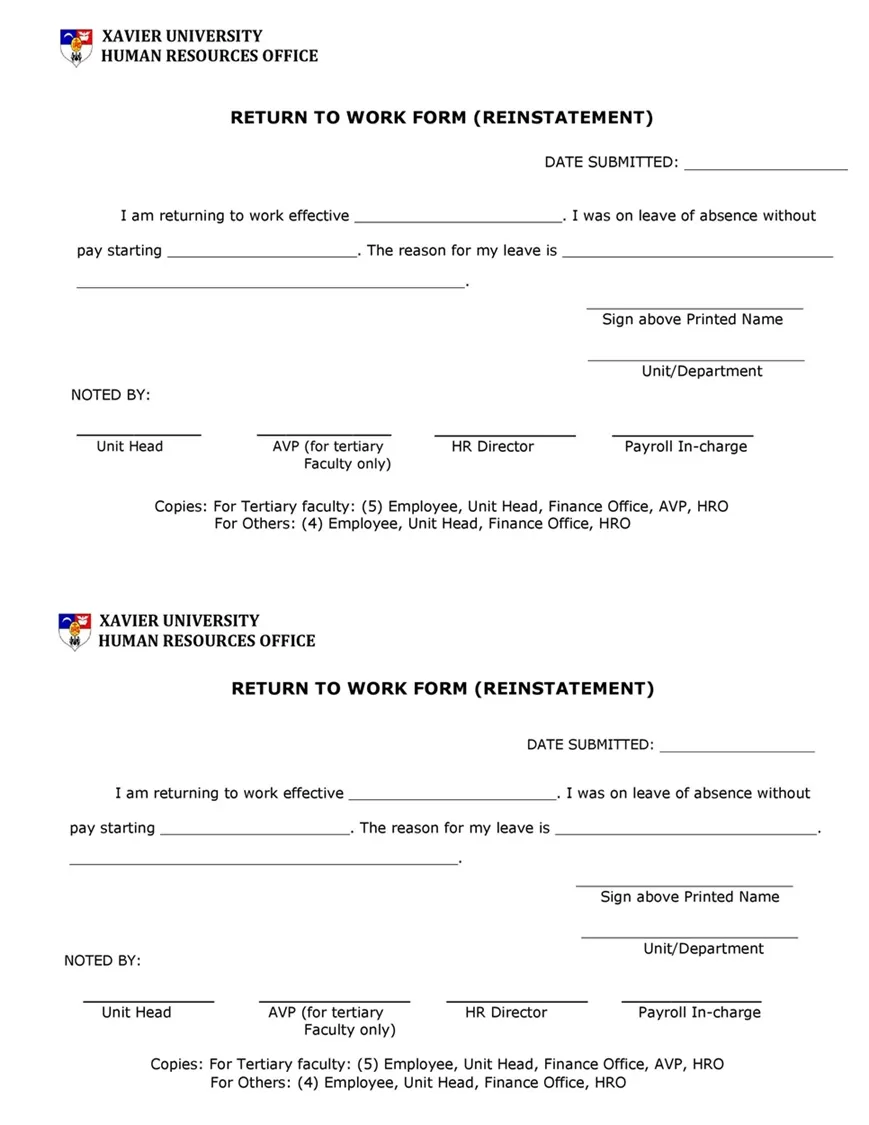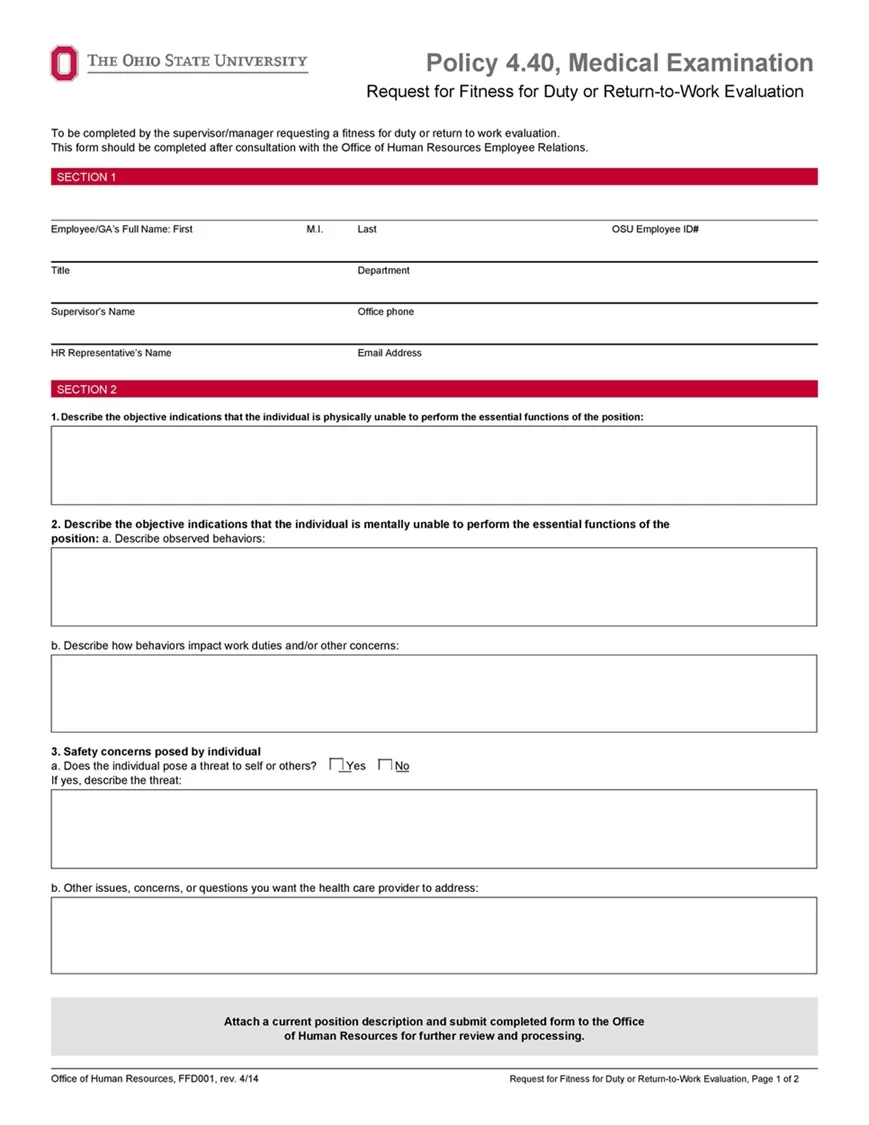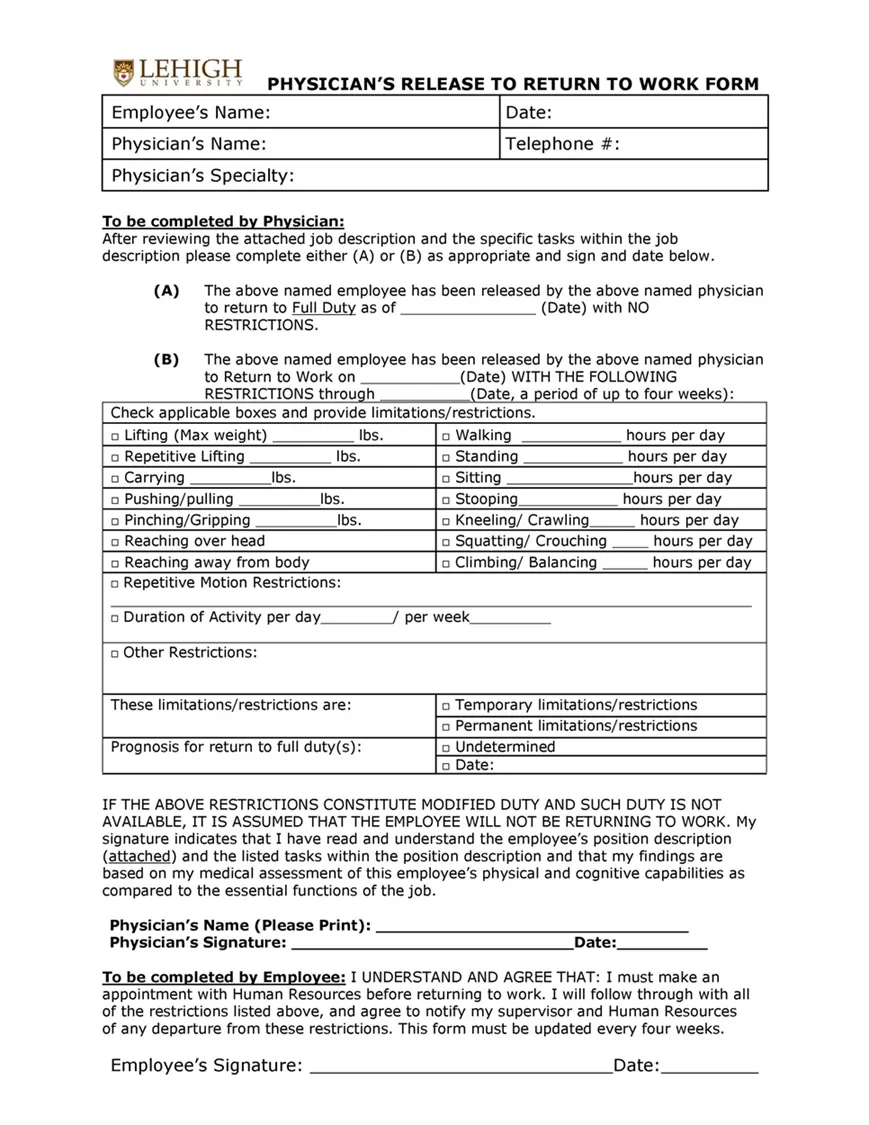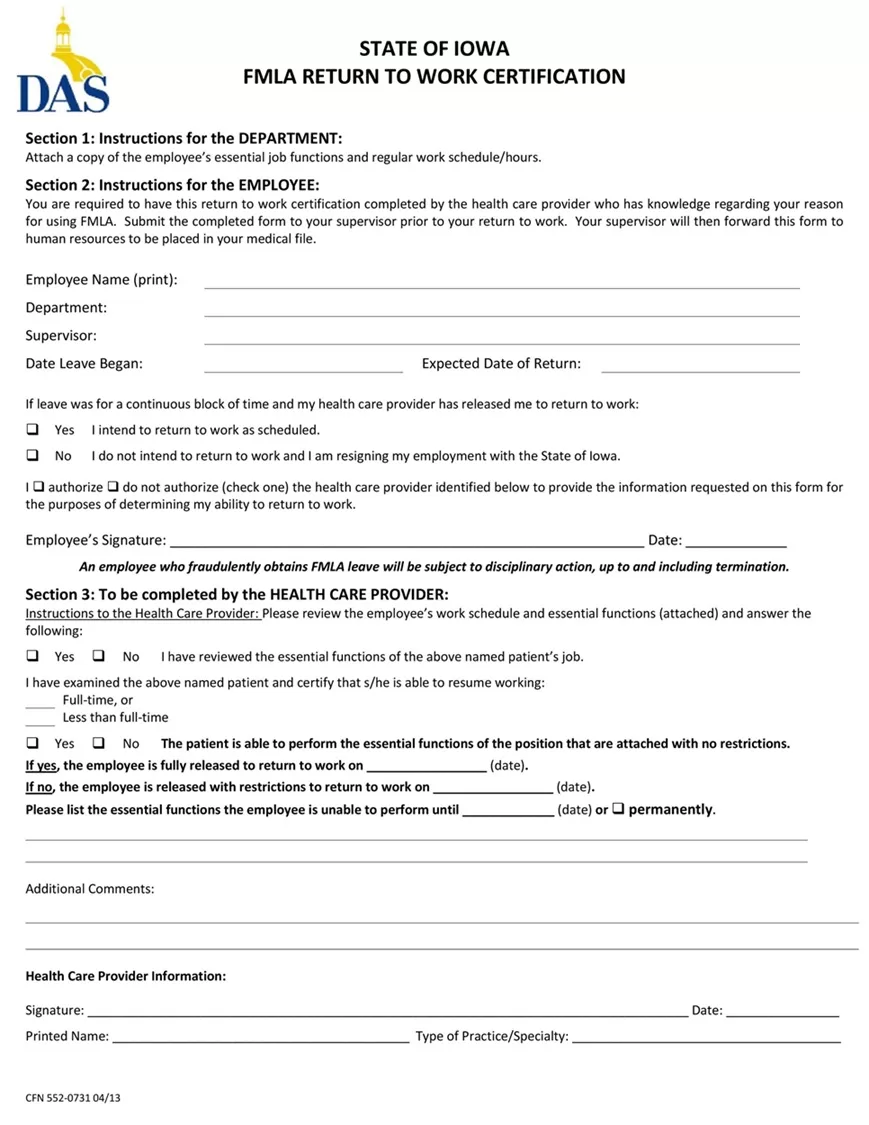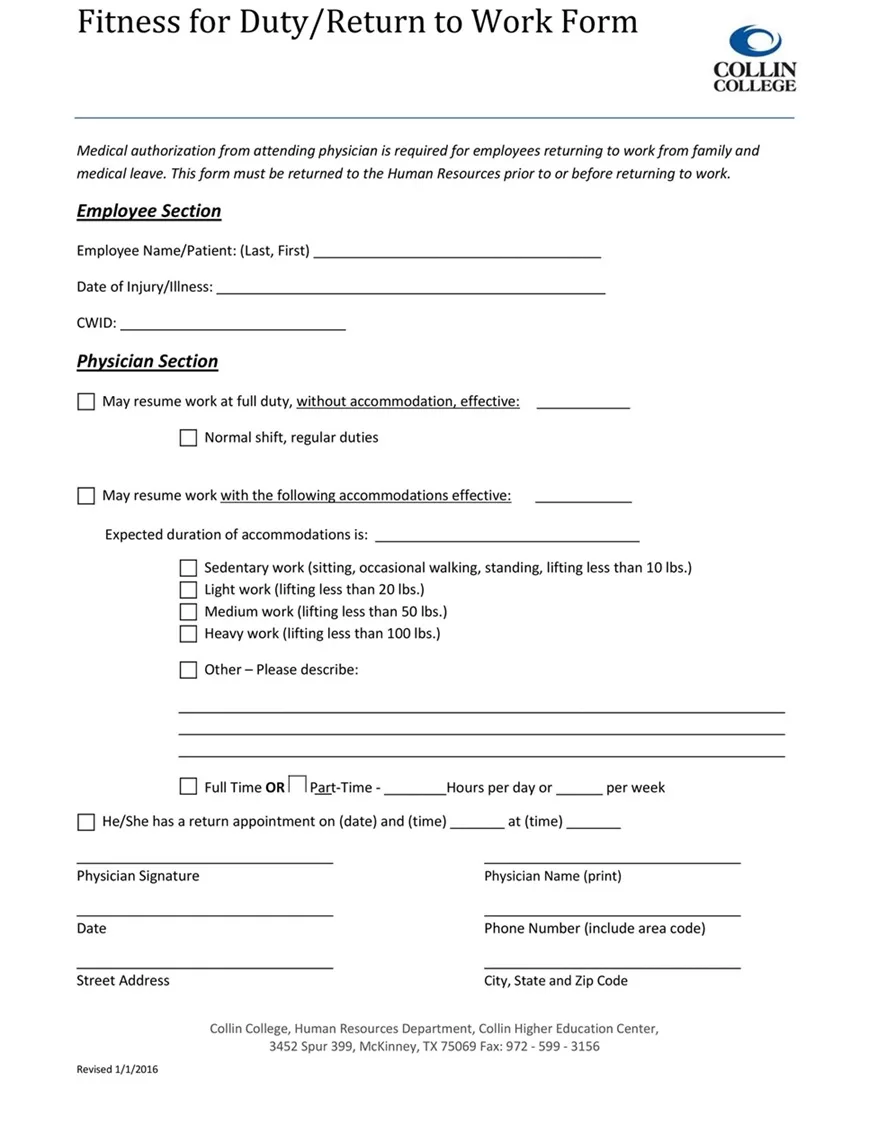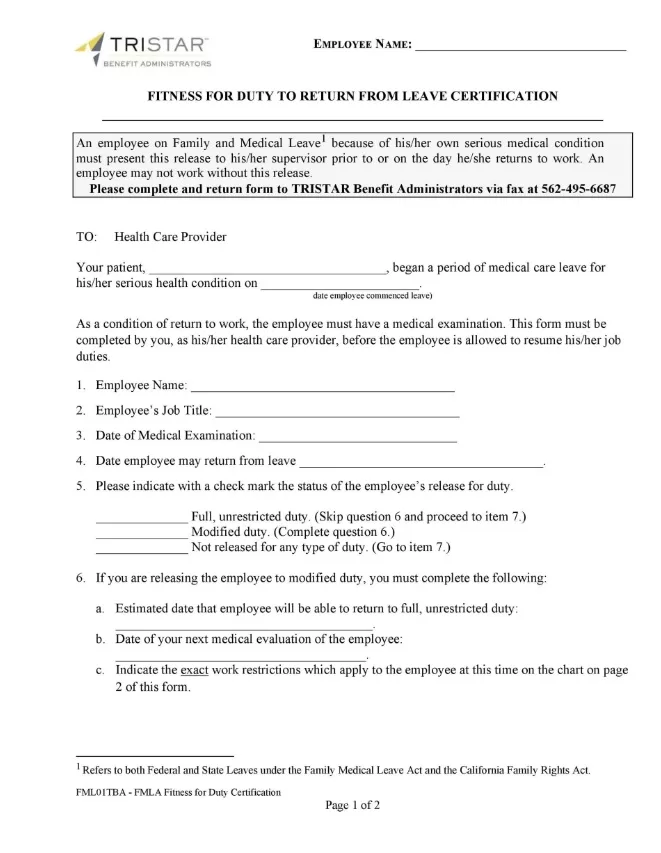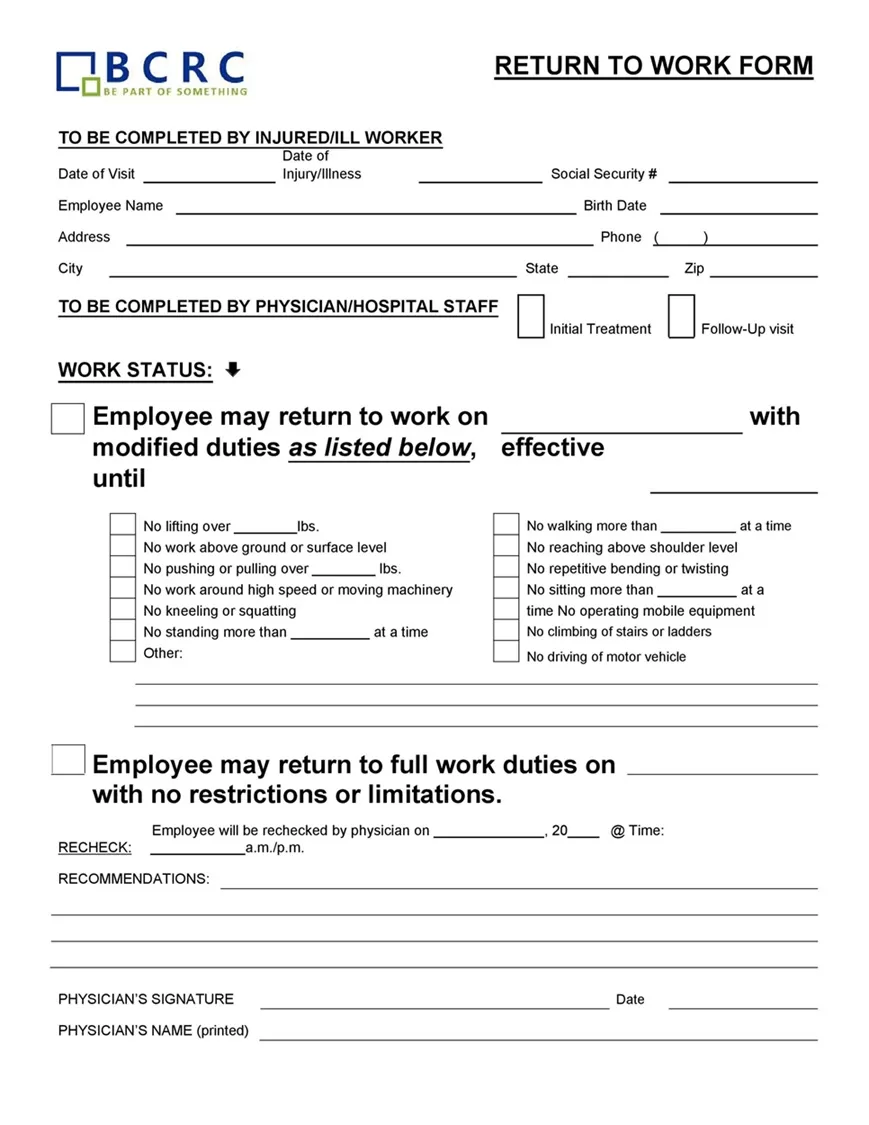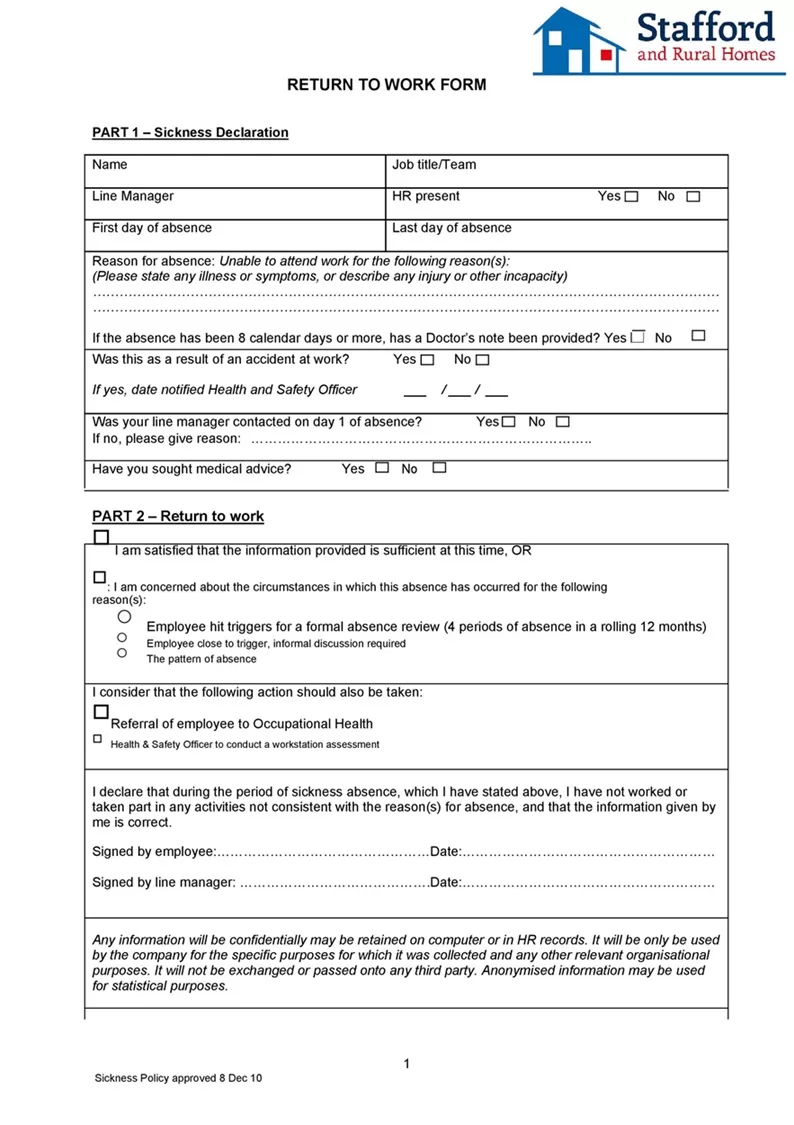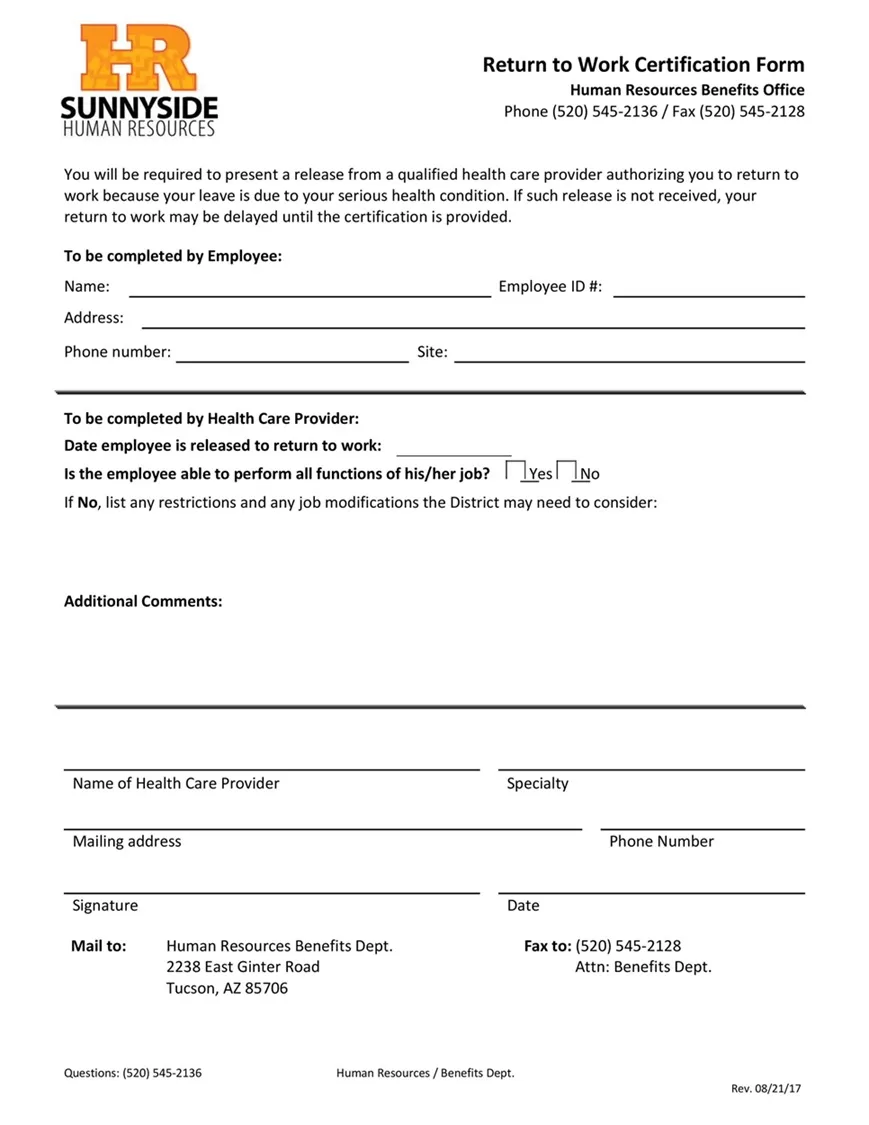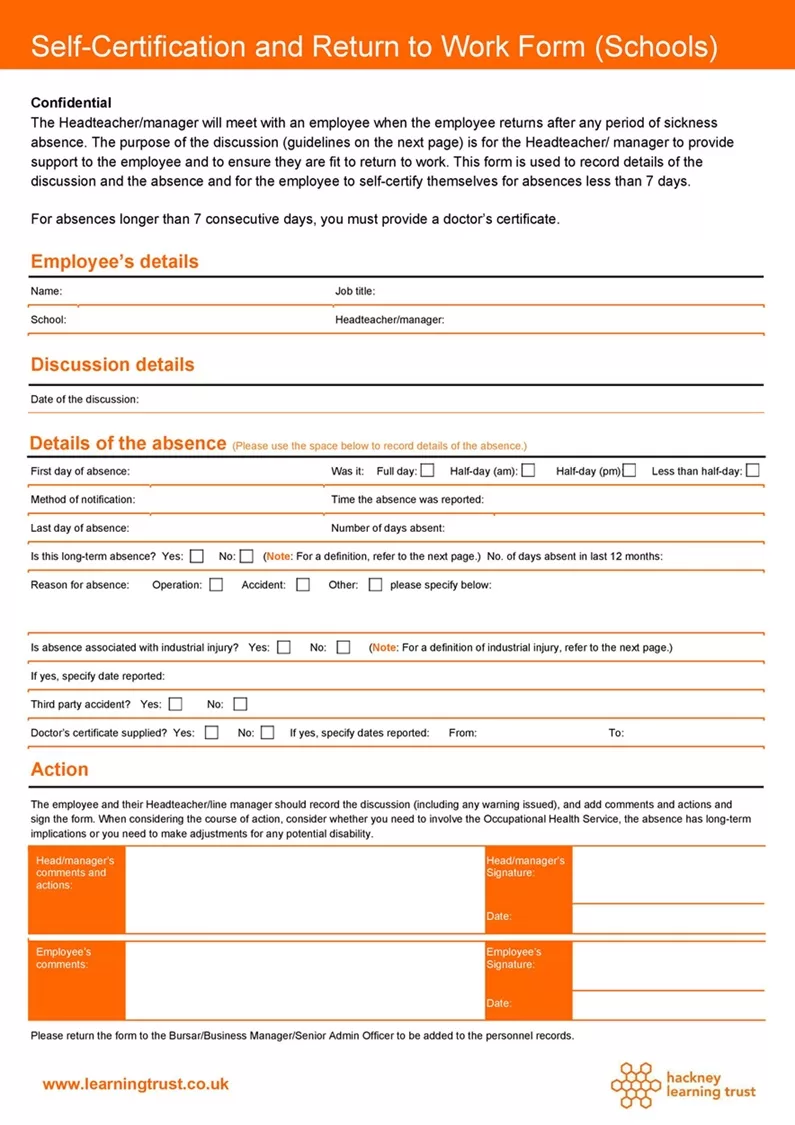Effective management of employee absence is vital to achieving the goals of the organization, and the Return-to-Work Form is one of the main instruments involved here. In my experience, for long-term absence due to illness, injury, or personal reasons, many organizations struggle with bringing people back into the workplace. An organized return-to-work form enhances this transition by providing a formalized way to assess and document an employee’s fitness to perform their normal duties. It ensures that the employer and the employee share a common understanding of the expectations for work, medical restrictions, and any necessary accommodations.
Contents
- Understanding the Purpose of Return to Work Forms
- Key Components of a Return to Work Form
- Free Return-to-Work Forms {Fillable PDF Format}
- Types of Return-to-Work Forms
- Implementing a Return to Work Process
- Legal Considerations and Compliance
- Free Return-to-Work Forms {Editable DOCX Format}
- Benefits of a Structured Return to Work Program
- Challenges and Solutions in the Return to Work Process
- Author
Understanding the Purpose of Return to Work Forms
In my experience, such return-to-work forms, which serve as an unbroken thread between the entire period of absence of an employee and the latter’s return to that workplace, have prevented miscommunication and helped enforce compliance with both company policy and legal requisites. Any return-to-work document goes beyond administration-not only in being the pronouncement of whether or not an employee is medically fit to return but also in covering anything that needs to be modified in the employee’s immediate work environment. A doctor’s note or medical clearance attached to the return-to-work form can really bring some peace to both the employer and the employee during the recovery process.
An organization with structured return to work forms can have an improved management of absence, less disruption in workspaces, and greater employee confidence to resume their roles. I have seen first-hand how a professionally programmed process will improve morale as the employees would feel valued, supported, not rushed back to work. By recording every element of the employee’s return, organizations are creating a safer and more productive work environment while remaining legally compliant with labor and occupational health policies.
Key Components of a Return to Work Form
Proper return to work forms are a must for transitioning employees back into the workplace after absence. For me, really effective forms are succinct, precise, and contain the most recent information needed to keep both the employee and the employer on track with expectations between returns. Thus, a return to work form is a confirmation-of-official appointment to an employee returning to work with any work restrictions and to ensure that the employer and the reintegrating employee have procedures following the workplace and legal policies in place.
Employee Information and Absence Details
To effectively identify the employee returning to work, the form should capture a full name, job title, department, and contact details of the employee. In addition, the form should stipulate the dates of absence and reasons for the leave of absence-in other words, ill health, injury, or otherwise. I have witnessed instances in which poor clarity regarding absence details caused miscommunication between HR and department managers, leading to unnecessary delays in the prompt return of the employee. Clarity on the length of absence and reason for absence helps an employer assess the readiness of the employee, including evaluating whether support is warranted.
Medical Certification and Work Restrictions
It is important to mention the health condition that is relevant to the employee’s return from medical leave. This statement may require a confirmation by a physician that the employee indeed is meant to be fit for duty, primarily in work involving strenuous physical activities or high-risk jobs. I typically suggest there should also be an area for work restrictions or accommodations so that employees do not go back to work that may worsen their condition. Also, if changes like fewer working hours or less physically demanding work need to be made, it should be noted on this form for clarity.
Signatures and Employer Confirmation
A return to work should always end with employee as well as employer signatures, indicating that each agrees to the terms under which he or she will return. This finalizes the acknowledgment in writing that both parties have reviewed the terms and expectations. In my experience, it makes the rounds with some formal agreement and protects both the organization and employee from further grievances. A well-prepared return to work form directs a systematic and equitable approach toward the safety of employees but reinstatement into the workplace.
Free Return-to-Work Forms {Fillable PDF Format}
Here are previews and download links for these PDF Forms,
Types of Return-to-Work Forms
A return to work form is not the same for every person. Specific forms have been designed for different circumstances that meet the unique requirements of employees and employers. From my perspective, to effectively manage any eventuality-whether the employee is recovering from a medical condition, returning after a long leave, or needing adjustments at work-having the right type of accurately specific return-to-work form makes all the difference. The particular form varies according to the type of absence and the job of the employee, as well as legal and medical implications.
Standard Return-to-Work Forms
Standard return-to-work forms are really the most widely used kinds. They basically apply to employees returning from regular short-term absences. It just captures the basic details such as the employee, dates of absence, absence reason, confirmation of sufficient fitness to return, etc. I have seen many companies using this common template for routine absence management. Employees take the declaration after entry and record keeping is in place while not needing the employee’s readiness anymore.
Physician Release to Return-to-Work Forms
A physician’s release is usually required for employees who have been absent due to illness or injury. The form states whether the employee is medically cleared or able to return to work from a healthcare provider’s perspective. Generally speaking, in industries with physical labor, heavy machinery, or safety-sensitive jobs, this form is an absolute must. Should the physician impose restrictions like light duties or limited hours, then the company is obligated to consider and legally accommodate those restrictions as far as is reasonable.
Return-to-Work Interview Forms
Employers conduct return to work interview forms for workers before they can come back to work. I have seen HR using the same in order to voice out any concerns regarding returning to the workplace. Also, adjustments have been made here at work so that the employee will be supported in the transition period back. This is a very important form for employees returning from stress absences, mental health leave, and workplace injury. It provides structure to deal with the possible difficulties faced by employees in resuming their work, minimizing the likelihood of re-absences.
Phased Return-to-Work Plan
The phased return to work form provides an organized approach for return to work, particularly for employees who need a step-down transition. I have seen it used for reduced work hours, modified job responsibilities, or an interim period of remote work. It sets clear expectations for the employer and employee while minimizing disruption to productivity or morale.
Picking the appropriate return-to-work form facilitates the efficient administration of the process and the enhancement of employee welfare while ensuring compliance concerning medical and legal standards of the workplace.
Implementing a Return to Work Process
A clearly-defined return-to-work process ensures that employees can return to their roles smoothly after an absence. In my humble opinion, I feel that having a clear and supportive process would alleviate confusion and considerably reduce the chances of further absence, thereby fostering a positive climate among employees. The process should be very carefully designed considering the type of absence, the workplace needs, and any adjustments that may be required. However, effective implementation would benefit both the employee and the organization in achieving a balance between operational needs and individual well-being.
Pre-Absence Planning and Communication
Despite the unpredictable nature of absence in some cases, a proactive plan to streamline the return process is essential. I have seen organizations with clear absence reporting and time-off requesting policies disrupt their employees’ return to work less than others. Therefore, open communications and HR teams are critical. Employees must keep informed about their responsibility about documentation, like submitting a return-to-work form or medical clearance if applicable. Maintaining a connection through check-ins helps build relationships, and decreases anticipation anxiety on the part of the employee when their absence exceeds what was anticipated.
Assessing Readiness and Conducting Return Meetings
Assessing readiness is the primary step that an employee must take prior to resuming duties. It is a requirement that I always establish a structured return to work meeting, especially after long periods of medical leave or injuries from the workplace. This is to enable managers and HR representatives to discuss with the employee about health, any necessary modifications in work due to health conditions, and answer all questions that could be bothering them. Where there are medical restrictions, the employer must comply with the provisions of safety regulations for the workplace and employment laws. It is helpful to set up a phased return plan that is suited for employees who require gradual re-integration so that they may not burn out and find themselves needing long-term recovery.
Ongoing Support and Monitoring
The return to work is not something that ends with the employee stepping back into their job. From my experience, it is vital to continue the support to prevent any repeated absences and to make sure that the employee succeeds long-term. Employers should periodically follow up with employees to be sure any problems are addressed, and adjustments are made as necessary. Possible adjustments in the workplace like flexible scheduling or adjusting levels of work should be assessed for their impact. Open dialogue and a culture of support enhance each employee’s sense of value, thereby increasing overall productivity levels. A return-to-work process that is well executed sets the stage for a smooth transition, allows employees to thrive, and builds workplace morale.
Legal Considerations and Compliance
It is a crucial area of legal compliance concerning return-to-work forms that protects employees and employers alike. I have seen so many cases in which poor knowledge of the labor laws leads to disputes, legal complications, and dissatisfaction in the workplace. Employers should try to strike a balance between meeting their operational requirements and protecting the rights of their employees with respect to workplace safety laws, disability acts, and medical confidentiality. A professionally designed and legally compliant return-to-work process will help mitigate organizational risks and prevent the emergence of a hostile working environment.
Employment and Disability Laws
The return-to-work forms should be in line with employment laws and disability laws so as not to open up loopholes for legal violations. Many labor laws dictate that an employer will provide reasonable accommodations for employees returning from medical conditions or disabilities to work for a certain period. I keep emphasizing the importance of knowing what those laws are, like for example the Americans with Disabilities Act (ADA) in the United States; it says that an employer must make reasonable adjustments for someone with a disability unless such an action creates undue hardship to the employer. Such laws include the Family and Medical Leave Act (FMLA), which provides for employees taking long leaves because of any medical condition so that they may be entitled to return to their positions without discrimination or retaliation. Local labor laws also determine the procedure to follow regarding medical documentation and stipulate workplace adjustments in regard to the employee’s circumstances.
Confidentiality and Medical Privacy
Compliance with return-to-work forms brings sensitive medical information as one of the most important issues. I’ve discovered organizations breaching privacy laws unintentionally from requiring unnecessary medical details or sharing private employee health records. Employers should ask only that information which is directly relevant to the ability of the employee to perform their job duties. Medical records should be locked up and only accessible to authorized individuals. Compliance with privacy legislation, such as the Health Insurance Portability and Accountability Act (HIPAA) in the U.S. or the General Data Protection Regulation (GDPR) in Europe, is in every employee’s interest in order to keep their health information secure.
Fairness and Non-Discrimination
Employers must ensure that their return to work policies do not discriminate against employees based on health conditions, disabilities, or the reason for their absence. I always advise companies to apply return to work procedures consistently to avoid claims of unfair treatment. If accommodations are provided for one employee, they should be offered to others in similar circumstances. Maintaining transparency in the process helps build trust while reducing the risk of legal disputes. A legally compliant return to work process ensures fairness, supports employees’ successful reintegration, and protects the organization from potential legal challenges.
Free Return-to-Work Forms {Editable DOCX Format}
Here are previews and download links for these editable MS Word Docs Forms,
Benefits of a Structured Return to Work Program
The substantial benefits that come to employees and employers alike with a return-to-work program are organized. To this end, I’ve found that companies that develop policy guidelines for reintegrating employees after an absence encounter the benefits of improved morale in the workplace, enhanced productivity, and a reduced risk of legal suits. By maintaining a structured approach to returning employees to work, the feeling of support is ensured for the employee, while the employer can maintain business continuity and prevent major disruptions. Such a defined process reduces the chances of miscommunication, therefore clarifying parties’ expectations and responsibilities.
Reducing Absenteeism and Turnover
The spirit of return to work strengthens the resolve against absenteeism. I have discovered so many instances whereby employees who are supported in their return have reduced chances of going on protracted leaves in the future. When an organization provides a properly structured process that addresses an employee’s health requirements and work capabilities, employees can return to work with greater confidence, free of undue stress. Such interventions not only prevent long-term absence but also help work retention because left unaddressed, such issues could push employees to seek employment elsewhere.
Enhancing Employee Well-being
This actively promotes the well-being of an employee with regard to returning him to work. An environment was created that became positive for all involved. I realized that people are indeed more engaged and devoted when they feel heard, accommodated, and valued. Programs that phased reintegration, offer modified duties, or allow for flexible working arrangements make it easier for employees to ease back into work after illness or injury or personal leave. Above all, it creates physical well-being as well as mental well-being and, therefore, solidifies trust between the employees and management.
Improving Workplace Productivity
It could create operational inefficiency, which may lead to gaps in workflow and productivity loss. I have noticed that organizations with structured programs do not have much disruption as they plan for work transitions in advance. They assess employees’ capability before they return and assign work appropriately while continuing to ensure efficiency in returning employees. Well-planned re-integrations ensure there will not be relapses or further absence, providing stability and operations to the workforce.
Legal Risk Mitigation
Return to work programs that are structured reduce the potential for the employer running aground on legal issues related to workplace accommodations and labor law. I have always stressed the need for compliance with employment laws to avert any claims of discrimination or unfair treatment. A well-documented program assures fair treatment for all employees, thereby facilitating the dispute resolution process and maintaining a compliant work environment. A structured approach would benefit all parties, creating a more organized and supportive return-to-work experience.
Challenges and Solutions in the Return to Work Process
The procedure of returning to work can often be quite complex and challenging for both the employees and the employers. I have witnessed many organizations going through challenges with the reintegration of employees after a long time away from the job, especially if medical and workplace adjustments or communications are involved. Lack of structure in dealing with these challenges will often lead to misinterpretations that result in decreased productivity or legal challenges. There must be clear strategies in place that will respond to these issues, facilitating a smooth return for employees and the workplace alike.
Resistance from Employees
Probably the most frequent challenges I have come across are employee resistance to returning to work after extended absences. There are typically fears of workplace judgment, high workloads, or lingering health conditions that keep employees from returning. Some employees may feel disconnected from their teams or question their ability to perform their duties. In such cases, the best cure is open communication. I usually suggest holding return-to-work meetings where employees can voice their concerns, and this is an opportunity for employers to ease their minds. Gradual return to work, flexible arrangements, or reduced workloads would help with the transition and help employees feel supported.
Identifying Suitable Duties
It is often a difficult task for returning employees who have been out on medical leave, particularly those with work restrictions, to be matched with appropriate tasks. I have seen managers having to maneuver through the internal workings of both the operational needs of the business as well as an employee’s physical or mental health limitations. Generally, the best approach to this troublesome issue is the cooperation of wellness professionals with HR teams to match modified duties to the employee’s abilities. Just out-of-work assignments, adjusted work schedules, and even remote working possibilities could be put in place as temporary measures to encourage the employee to contribute while progressively building back to full capacity.
Managing Recurring Absences
Not infrequently, an ill-planned return-to-work process results in recurring absenteeism, especially when an employee returns prior to or without the special support necessary for their reintegration. It has been noted that organizations that have a return-to-work policy usually experience fewer incidences of repeat absenteeism. An excellent solution would be to add follow-up status check-ins from HR or managers to regularly assess the returning employee’s adjustment. Monitoring workloads, providing additional resources, and offering wellness support could go a long way in preventing employees from feeling overwhelmed, hence ensuring a more stable reintegration.
Balancing Operational Needs
One of the obligations of an employer is to ensure that an employee’s reintegration does not interfere with business productivity. In my experience, I have seen situations where some colleagues assume extra responsibilities while an employee is away. This certainly places some imbalances in workload upon the employee’s return. Proper forward-thinking workforce-planning practices such as covering spikes in work with temporary staff or properly redistributing assignments would allow the organization to keep running without overburdening the returning employee or other coworkers surrounding him or her. Addressing these risks proactively, the return-to-work process should be unimpeded and beneficial for both parties.
Keep in touch for future updates on this topic to grab more free templates.


